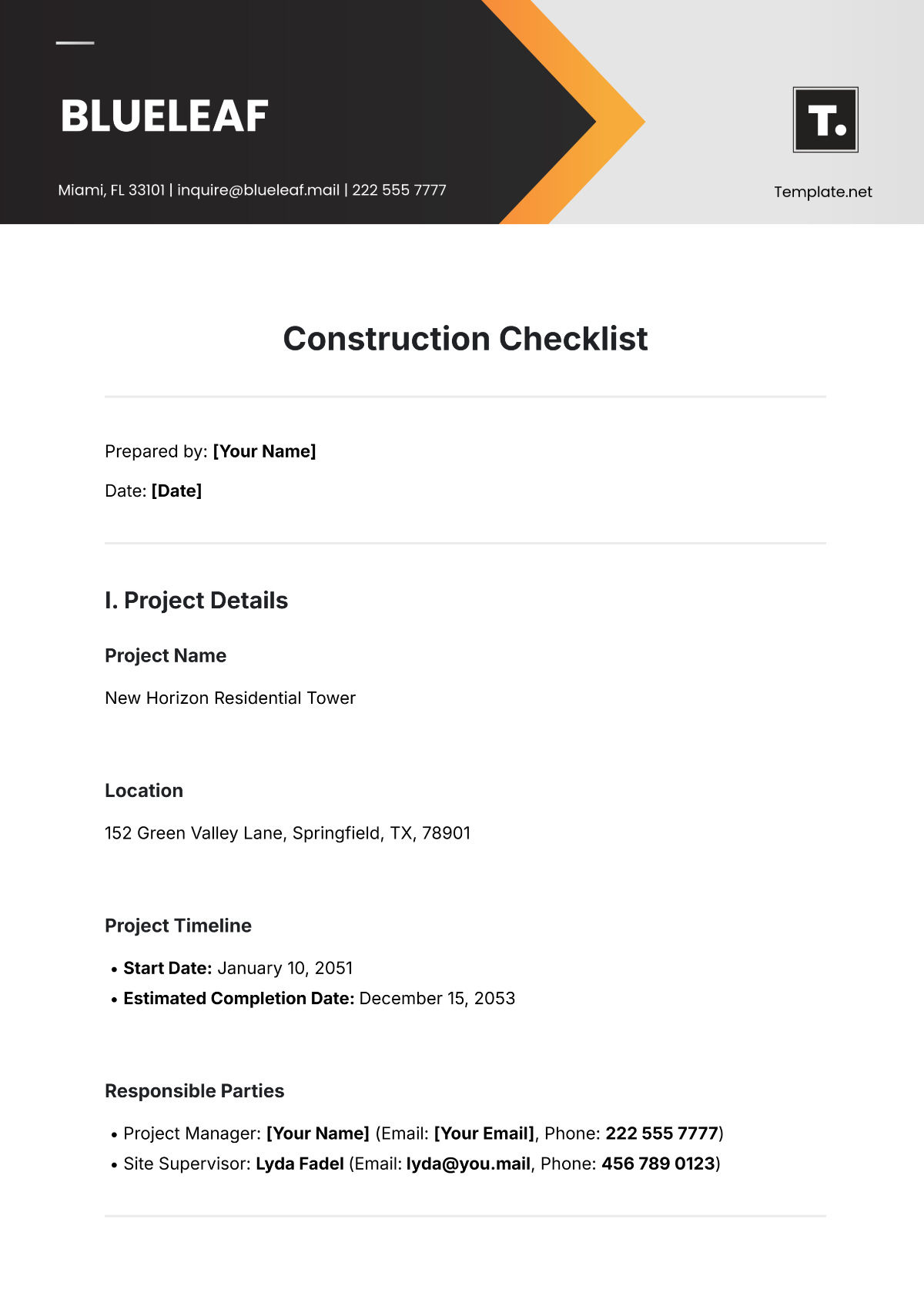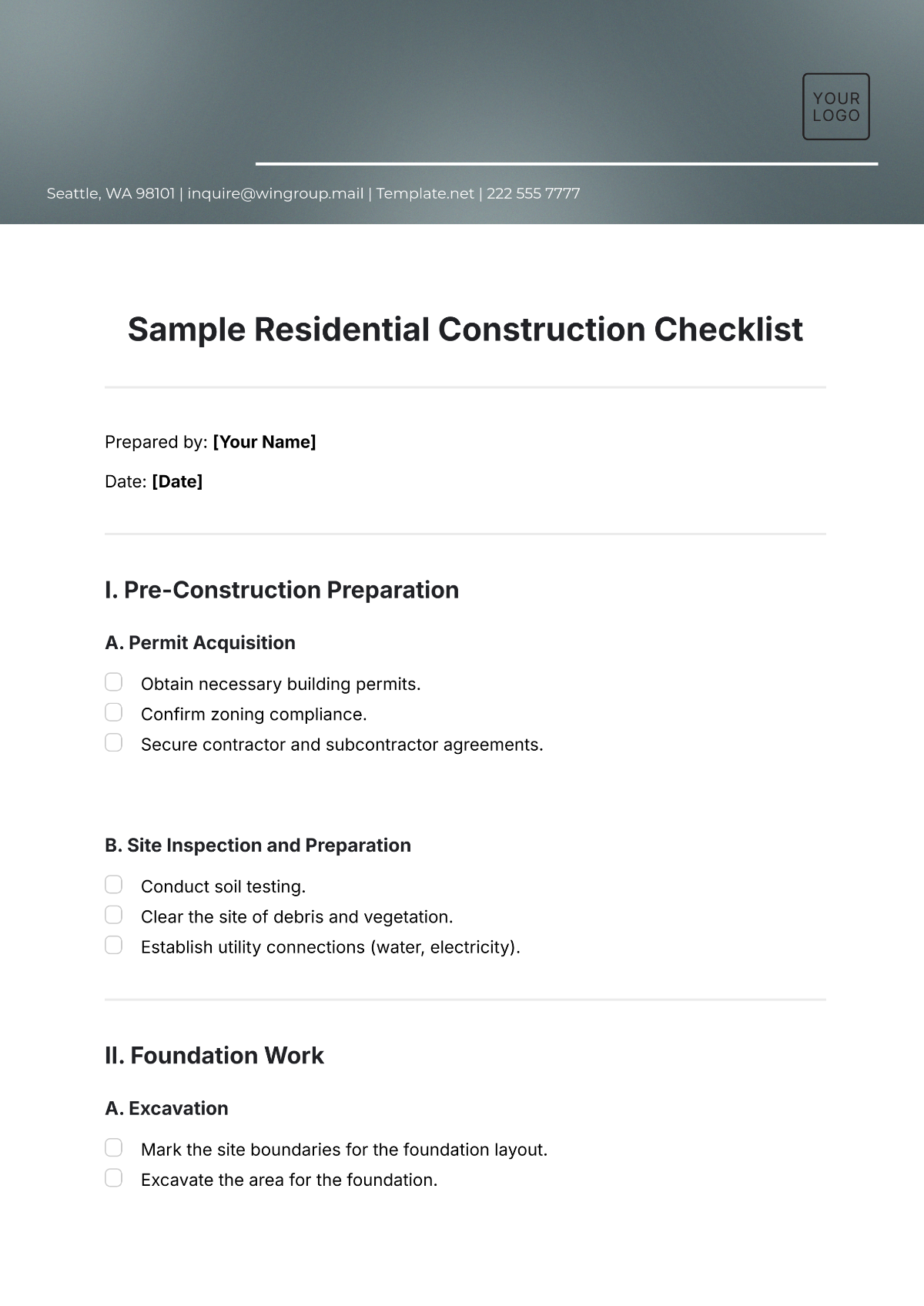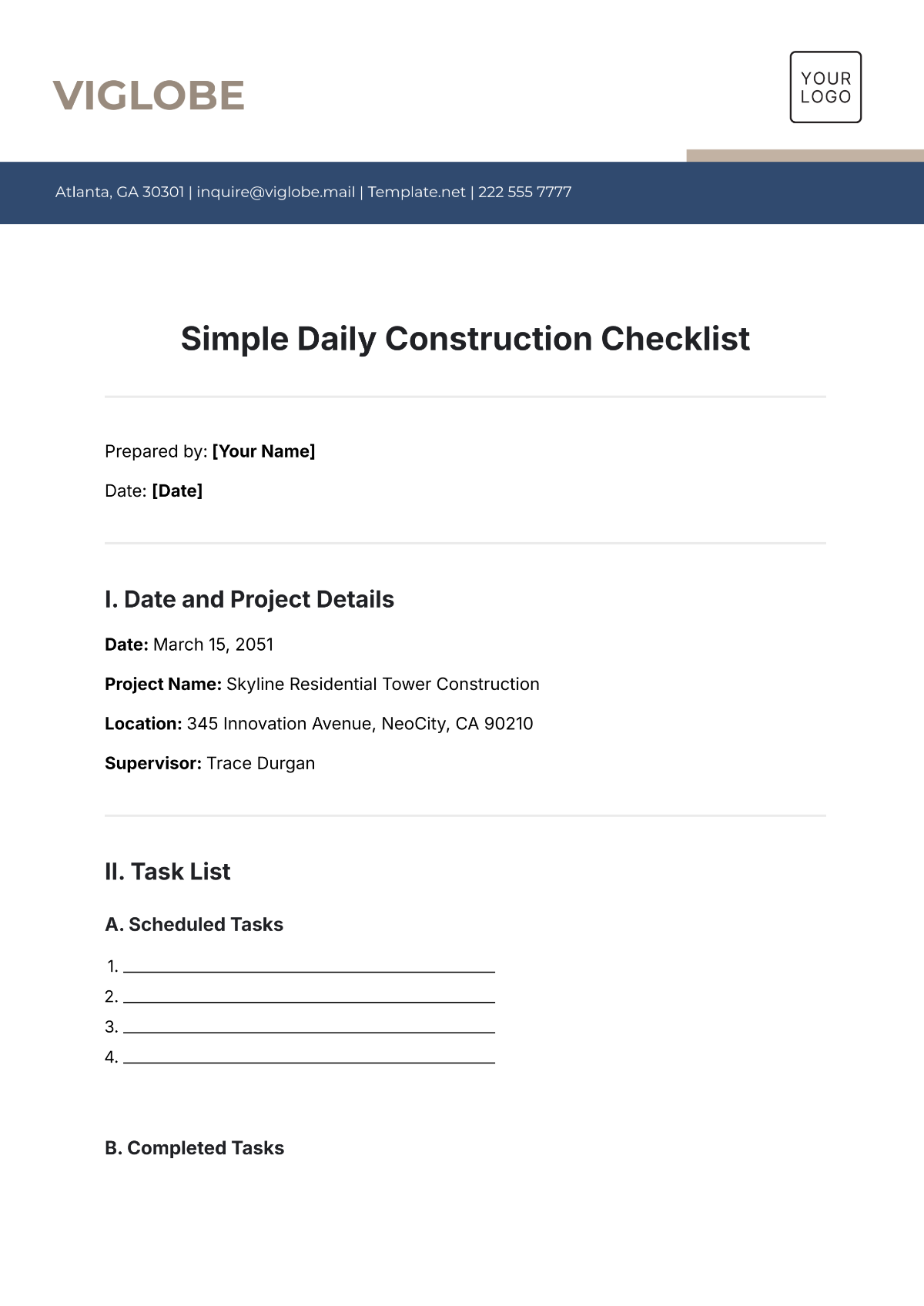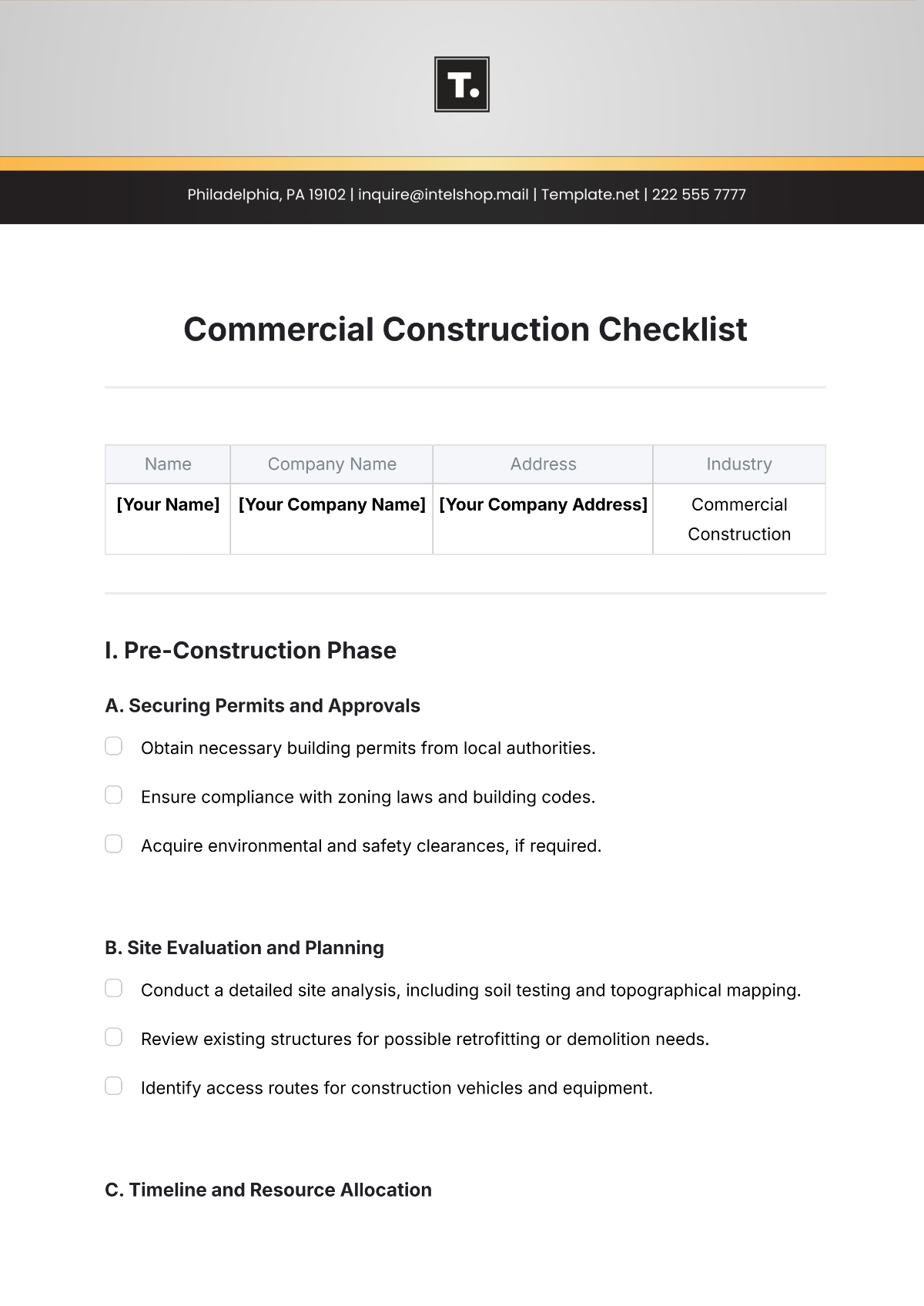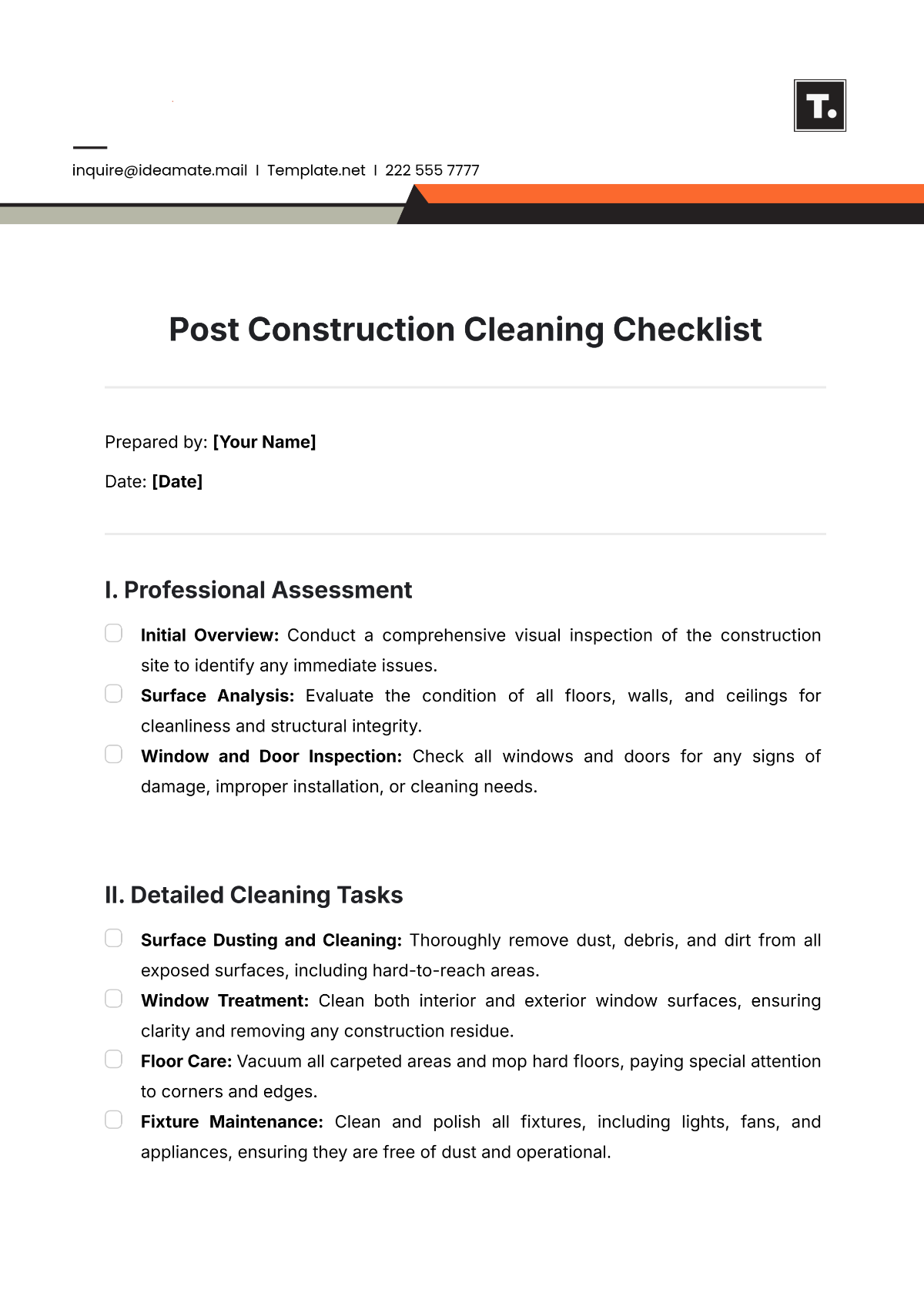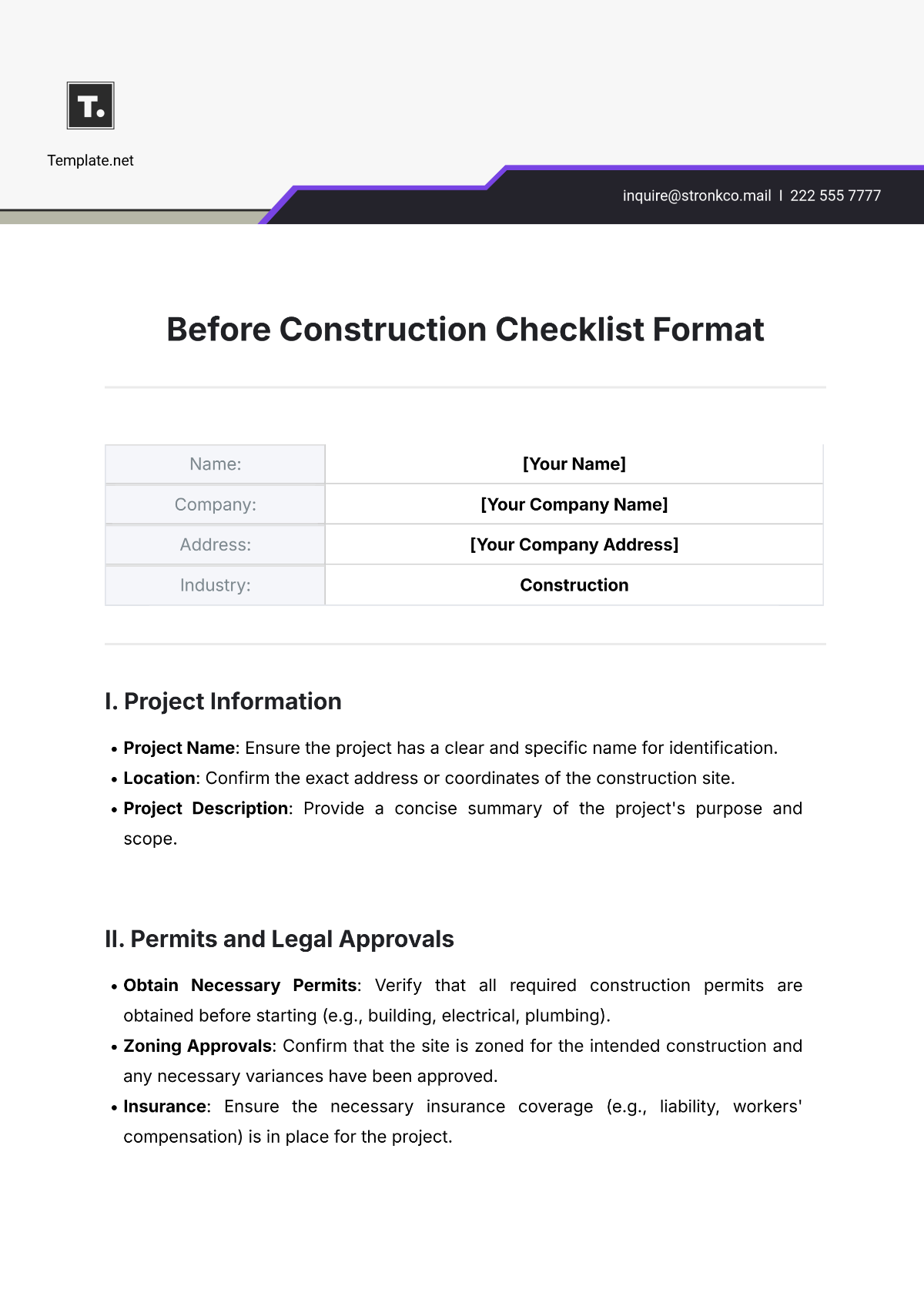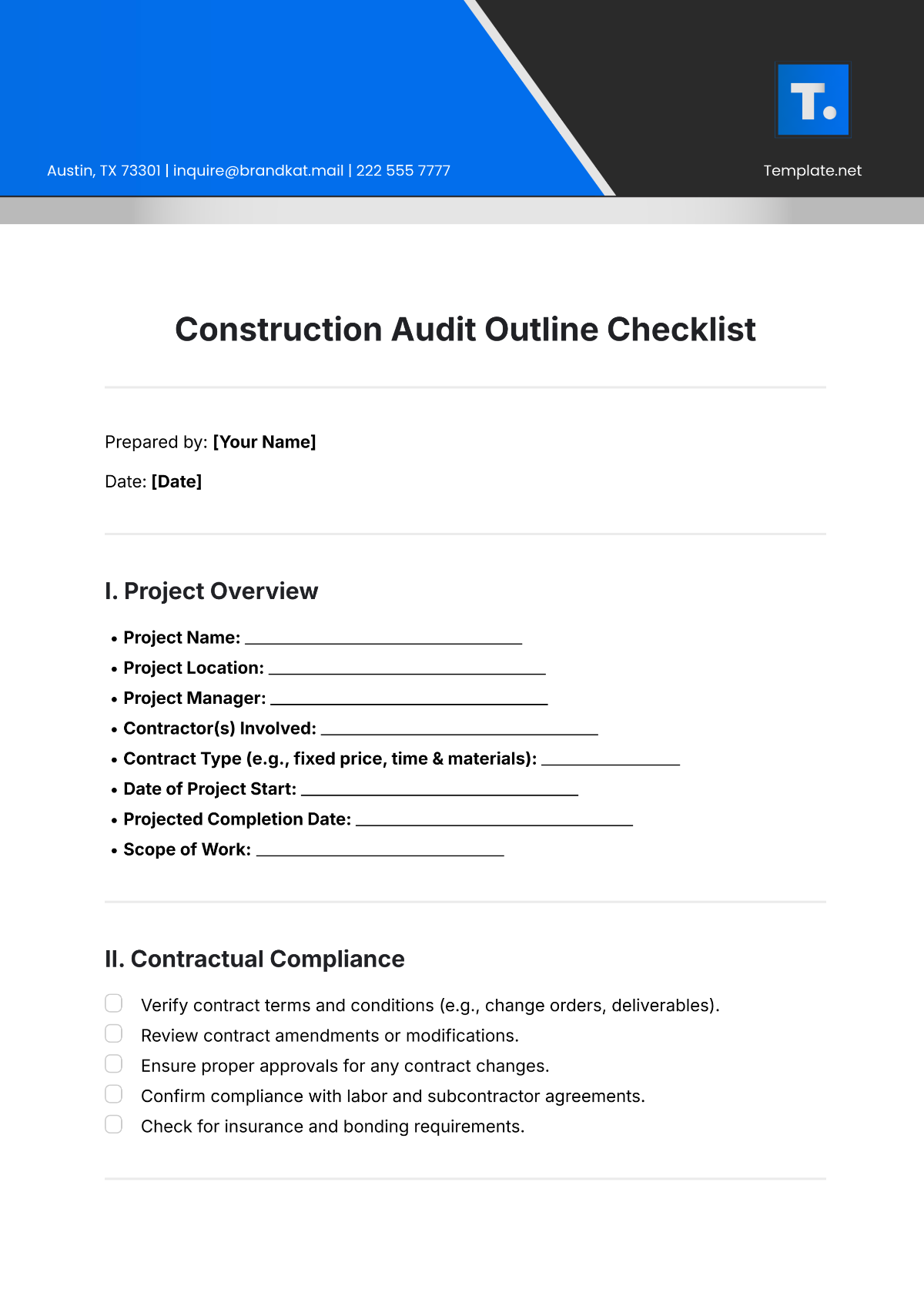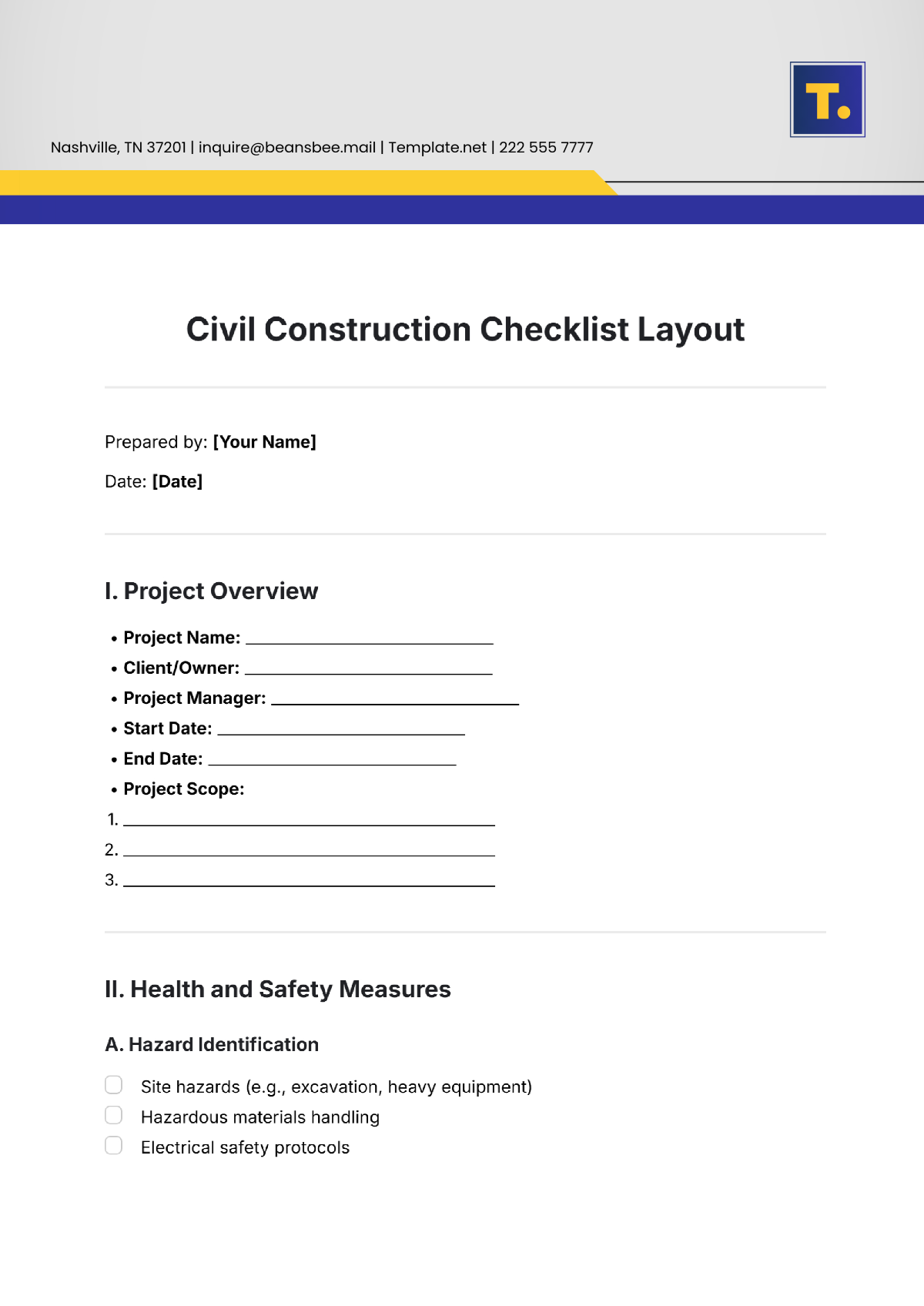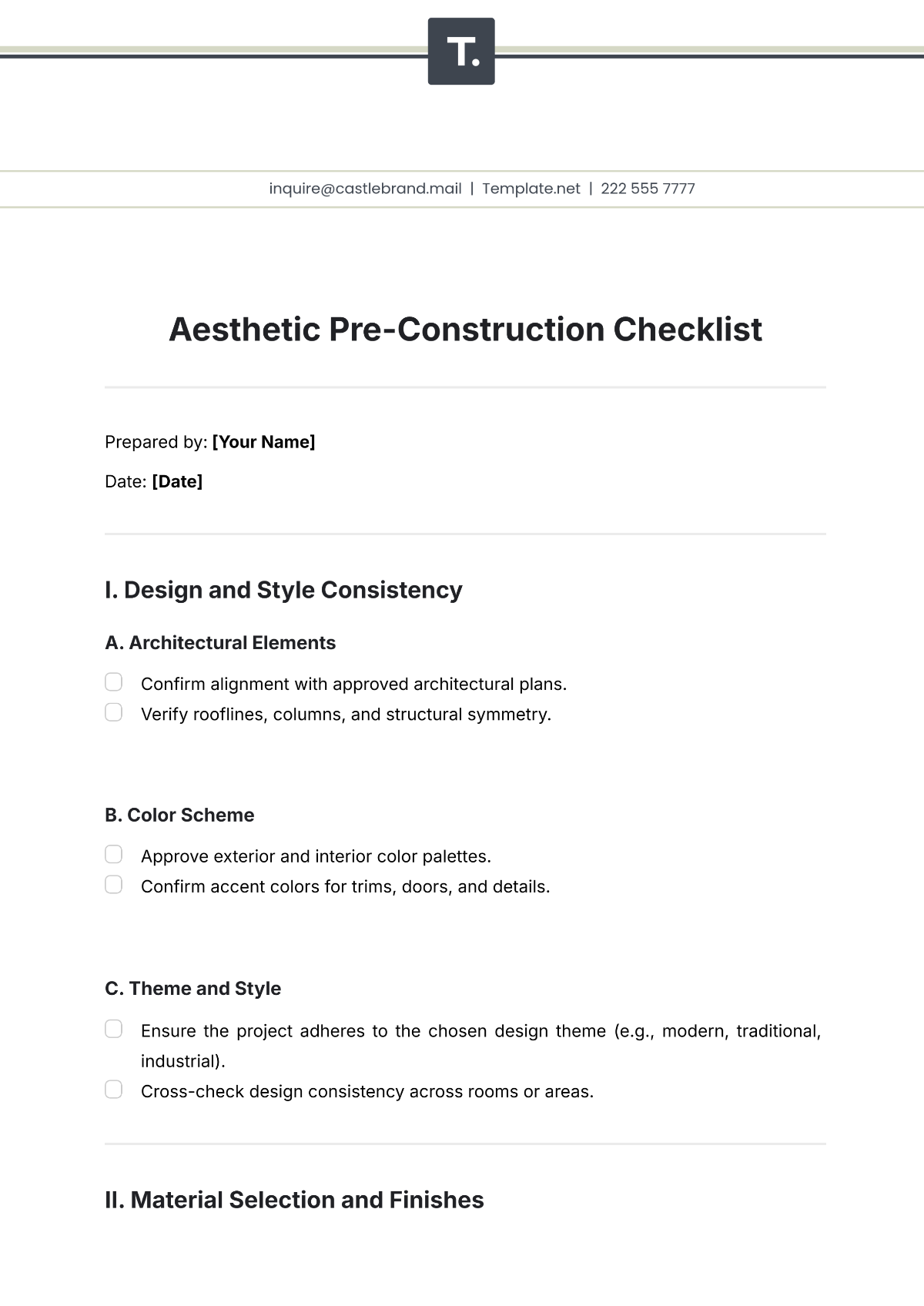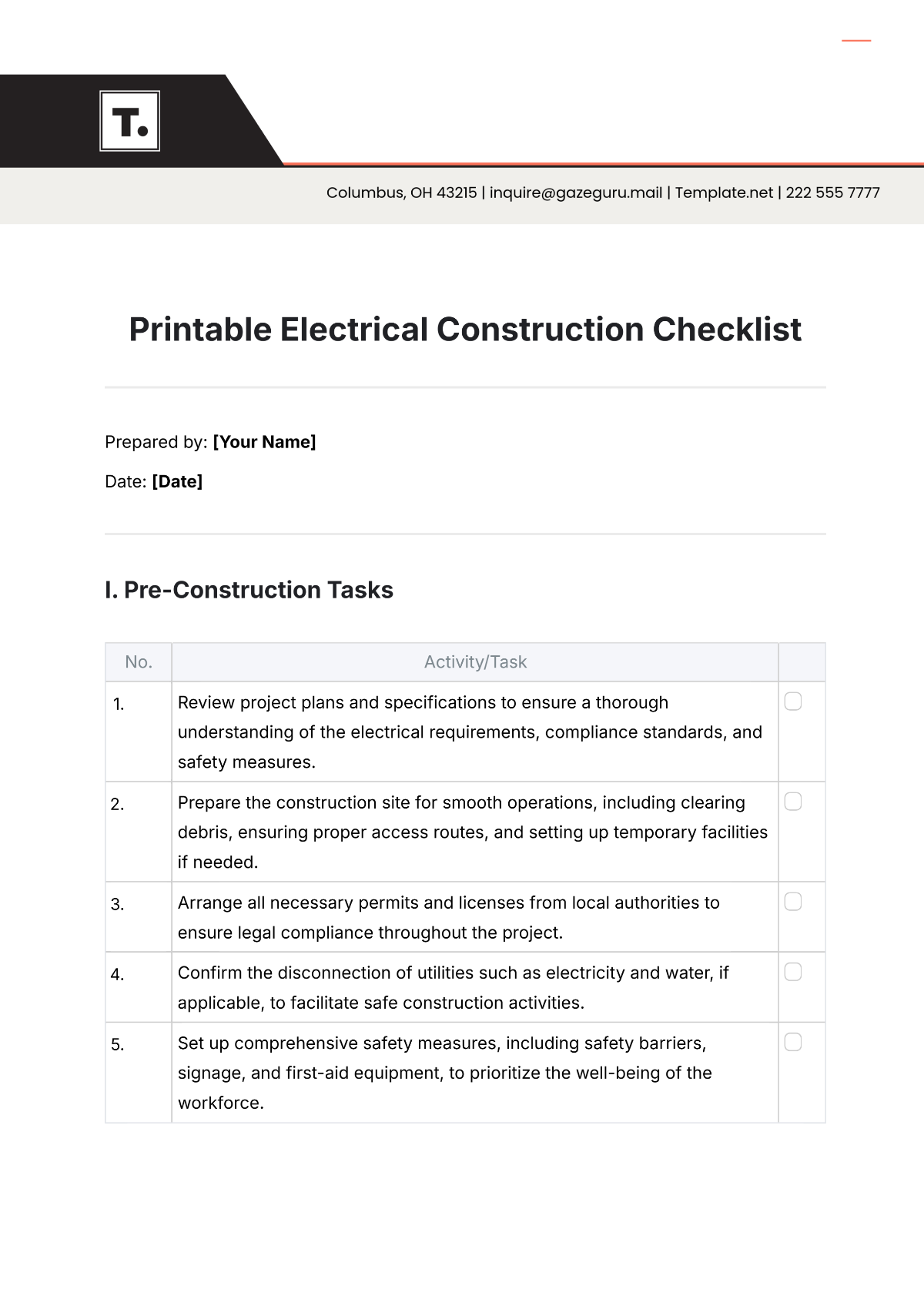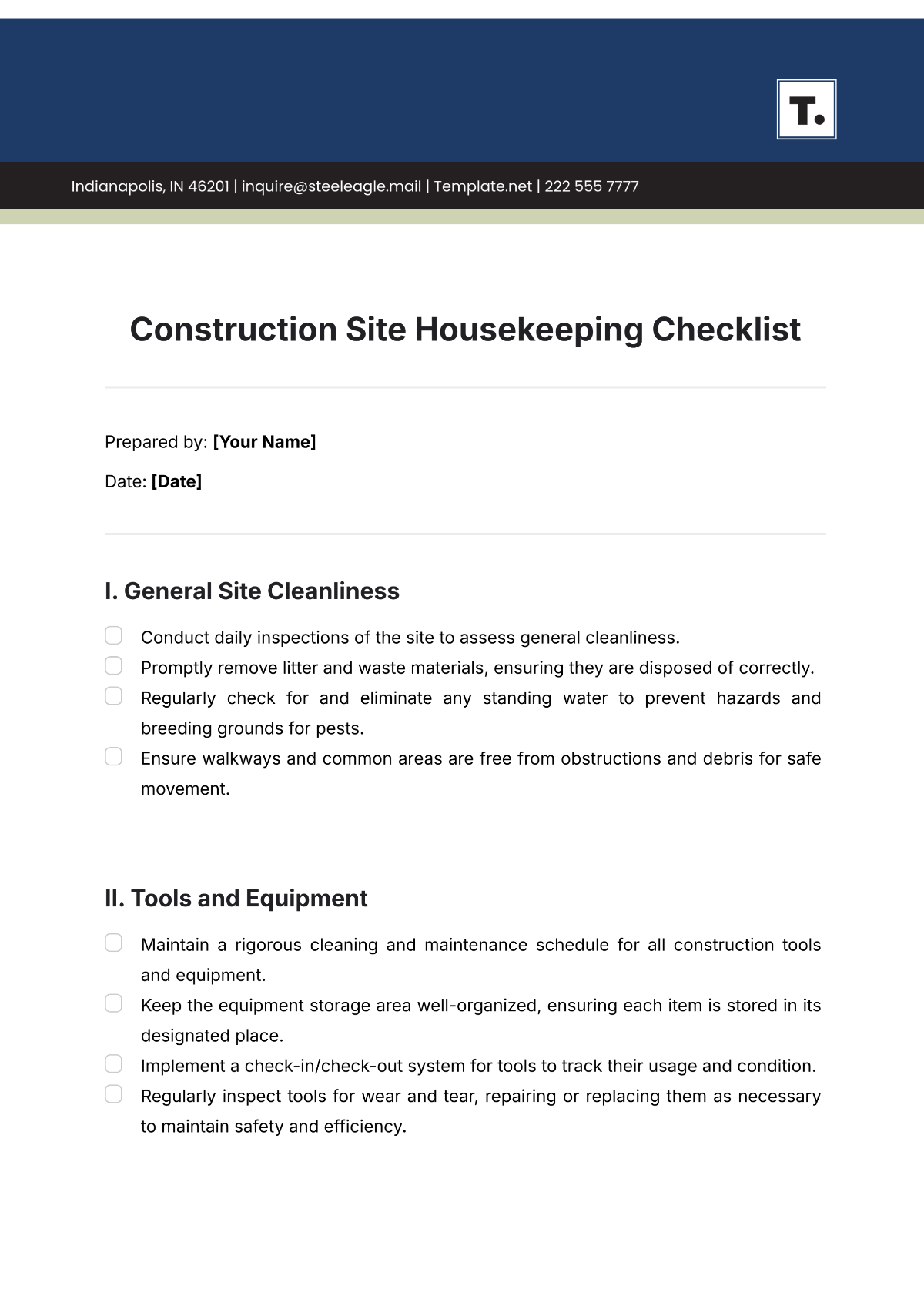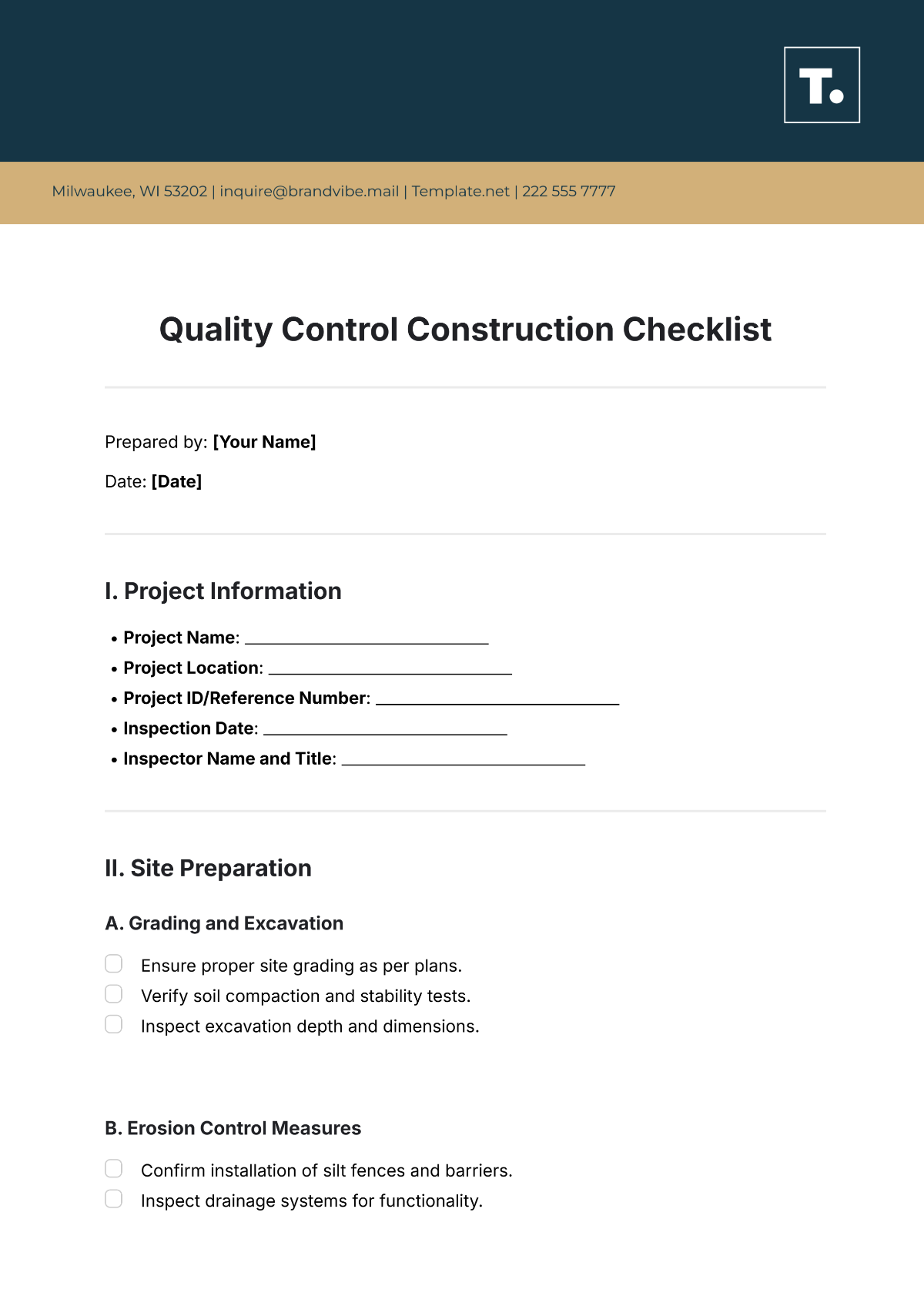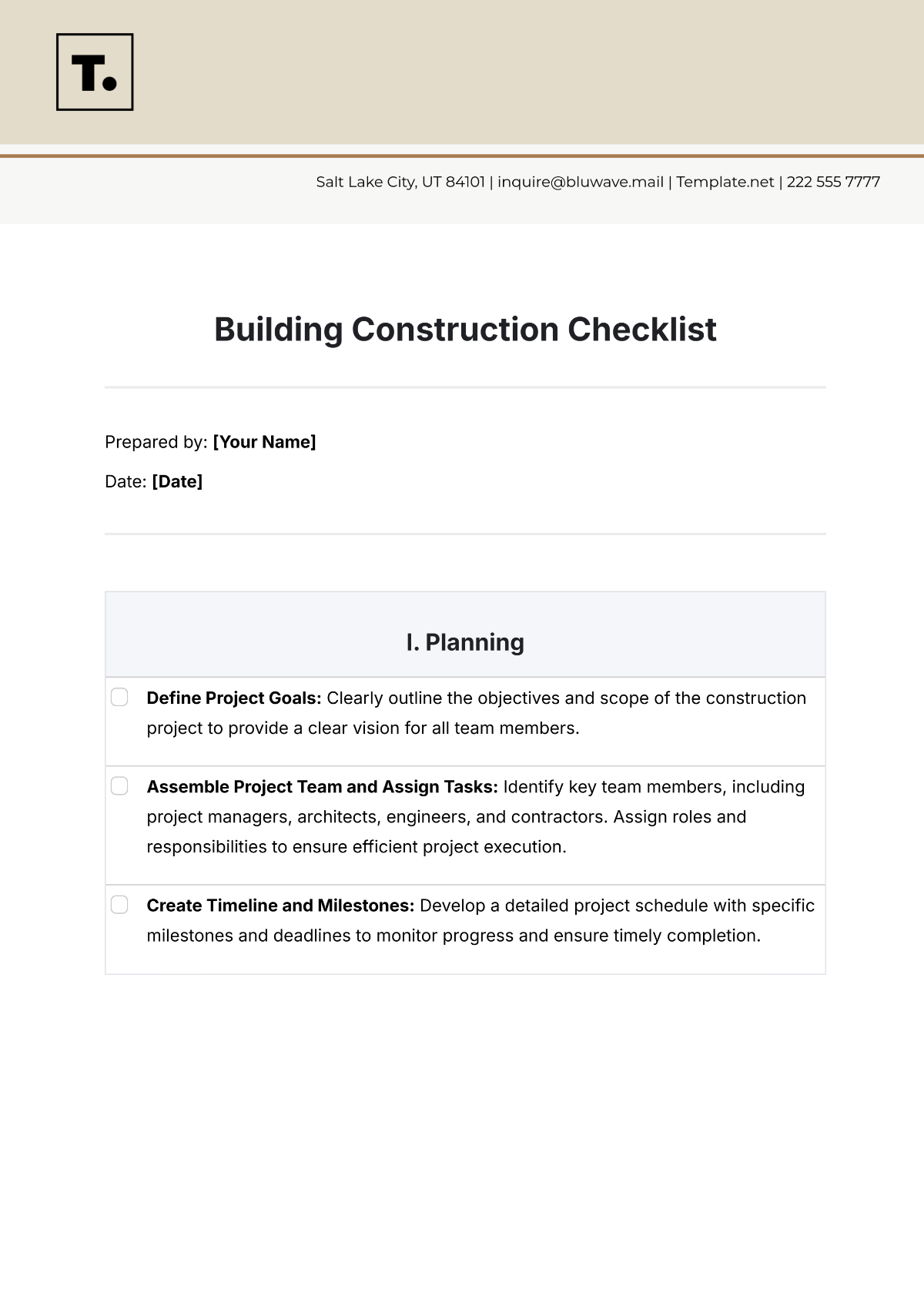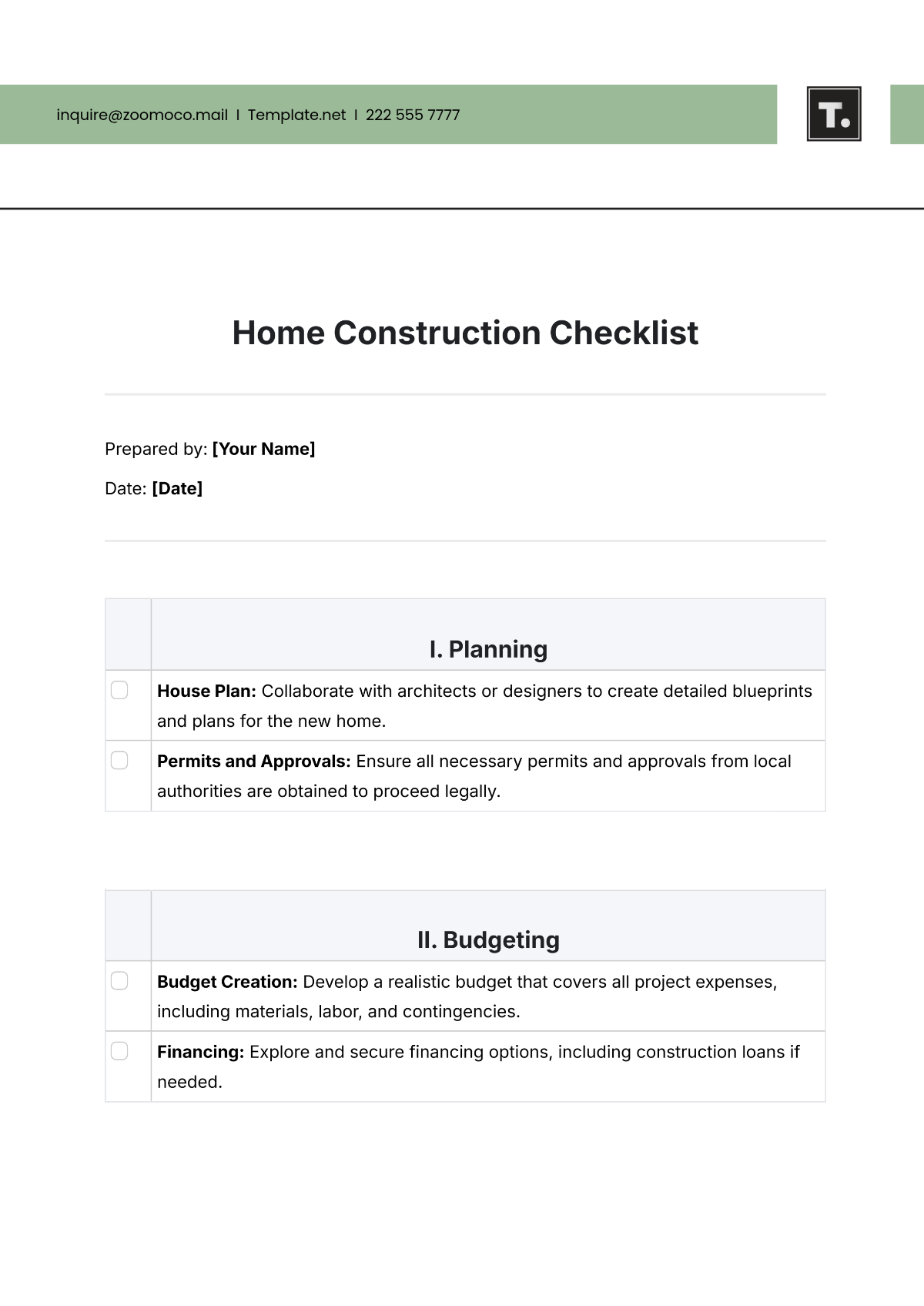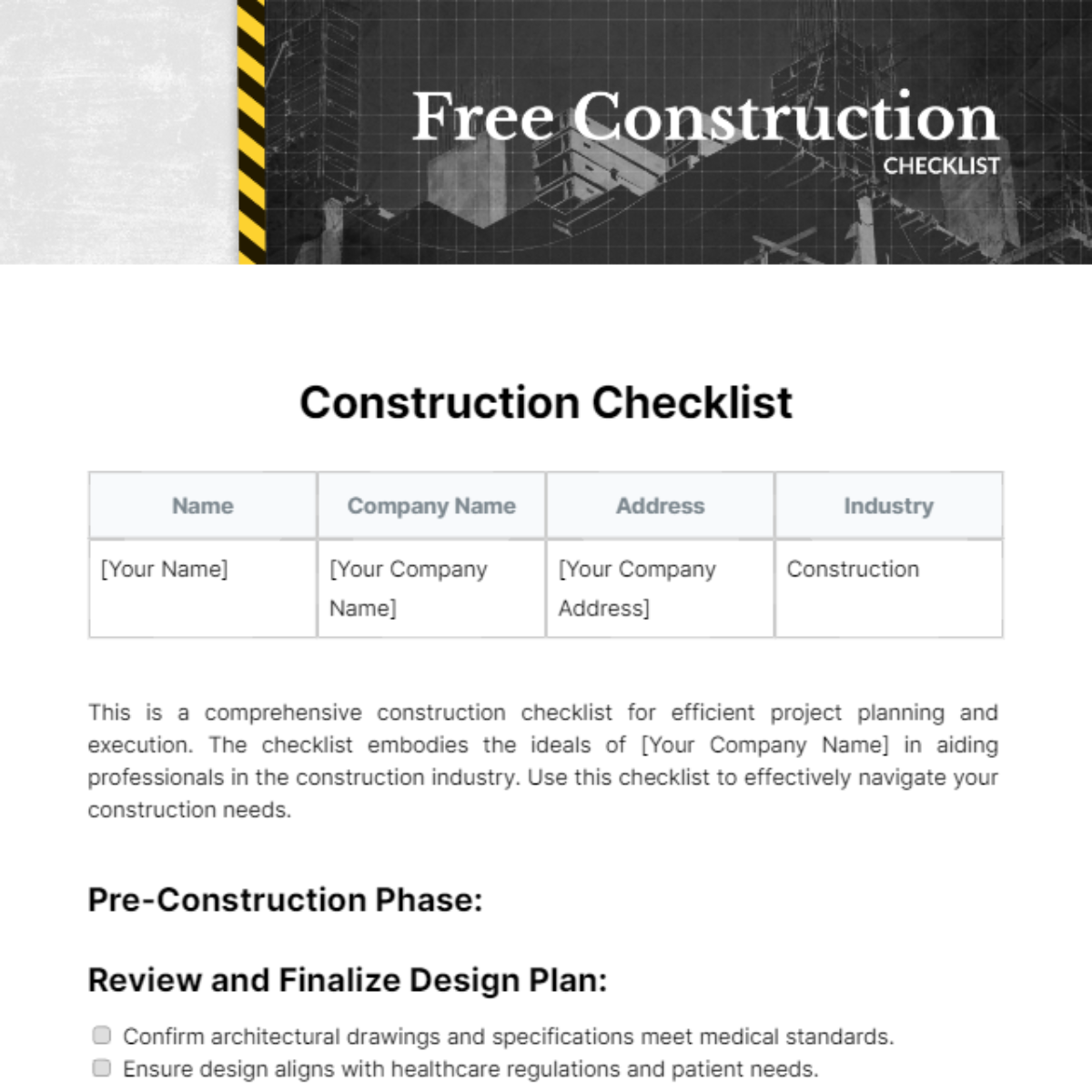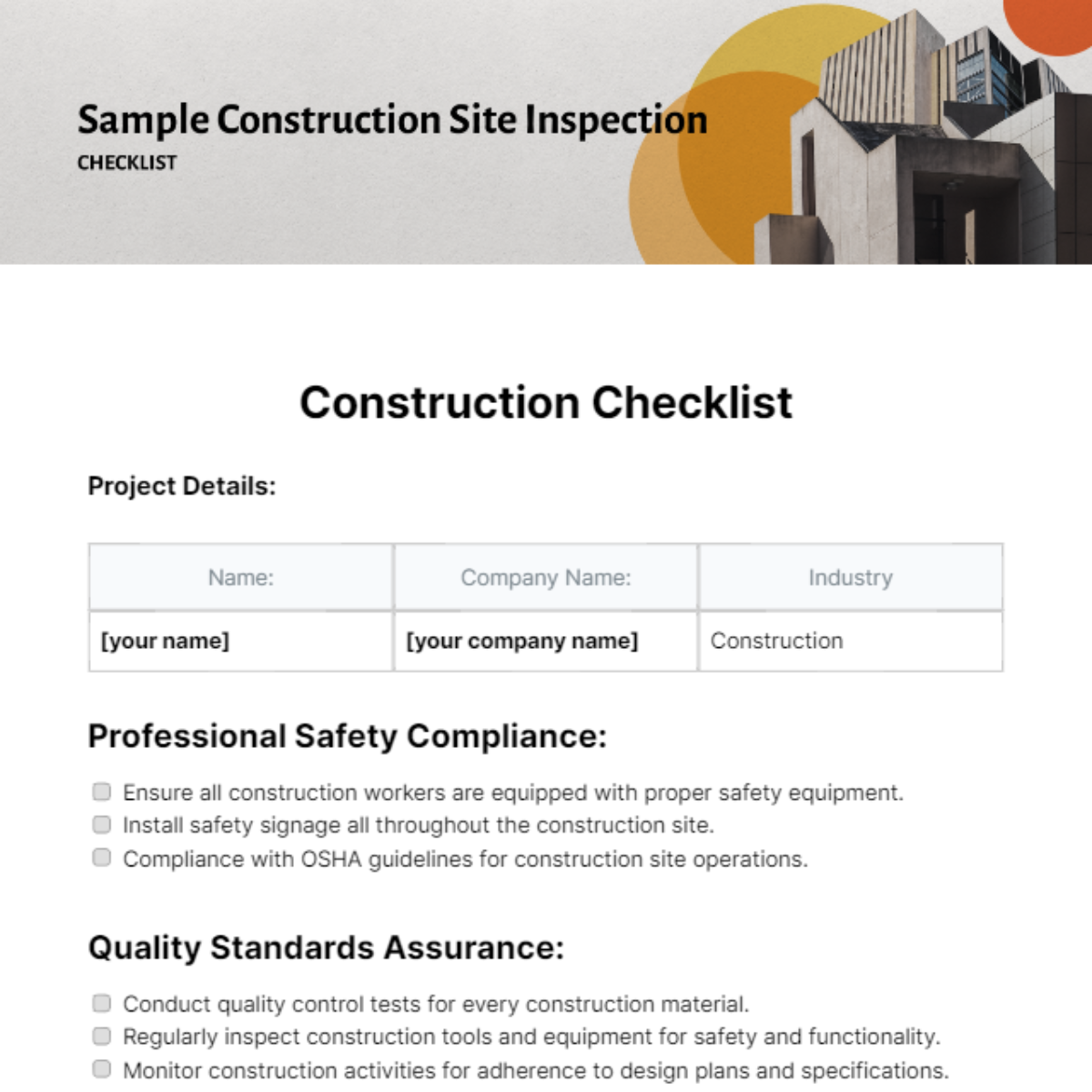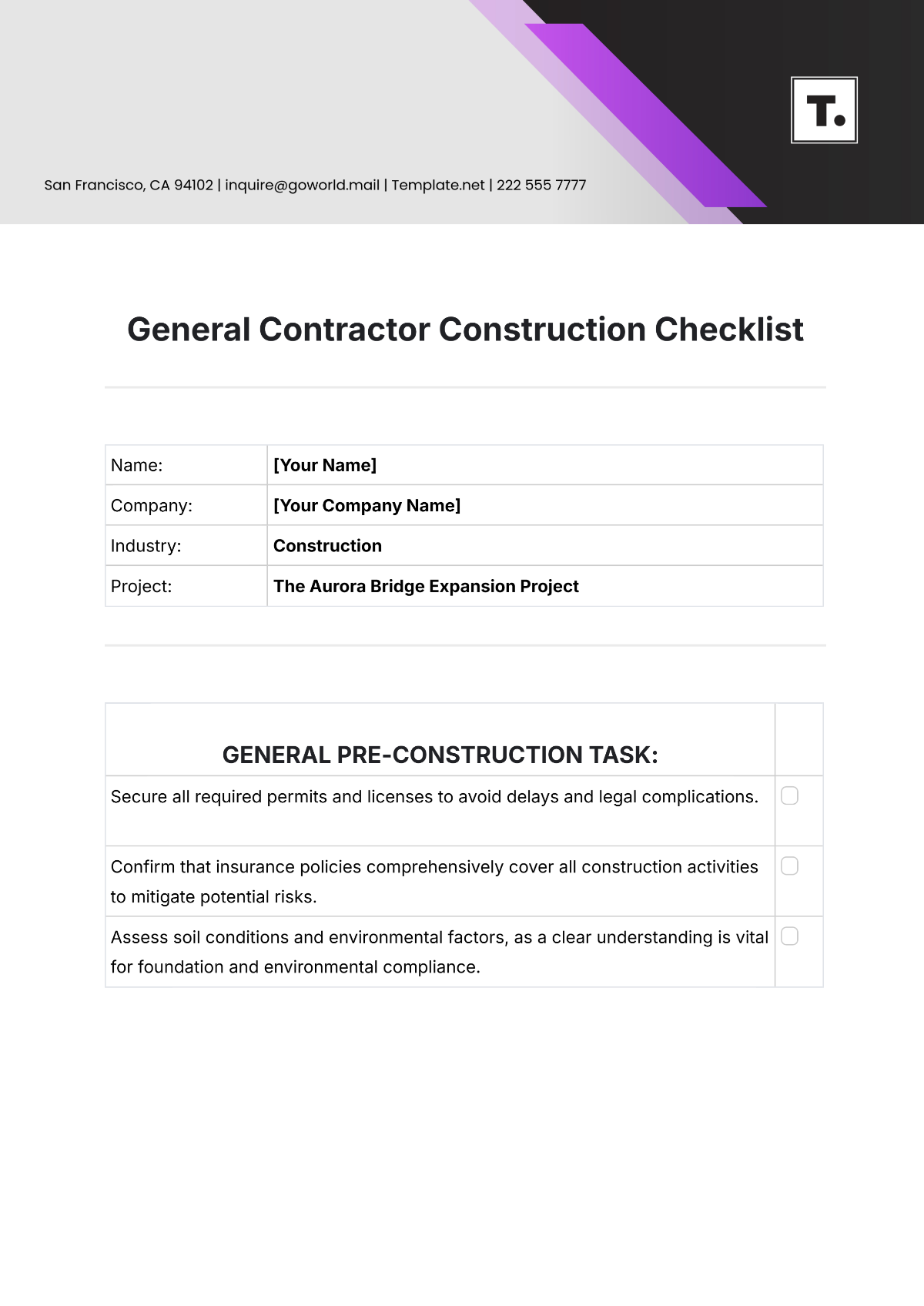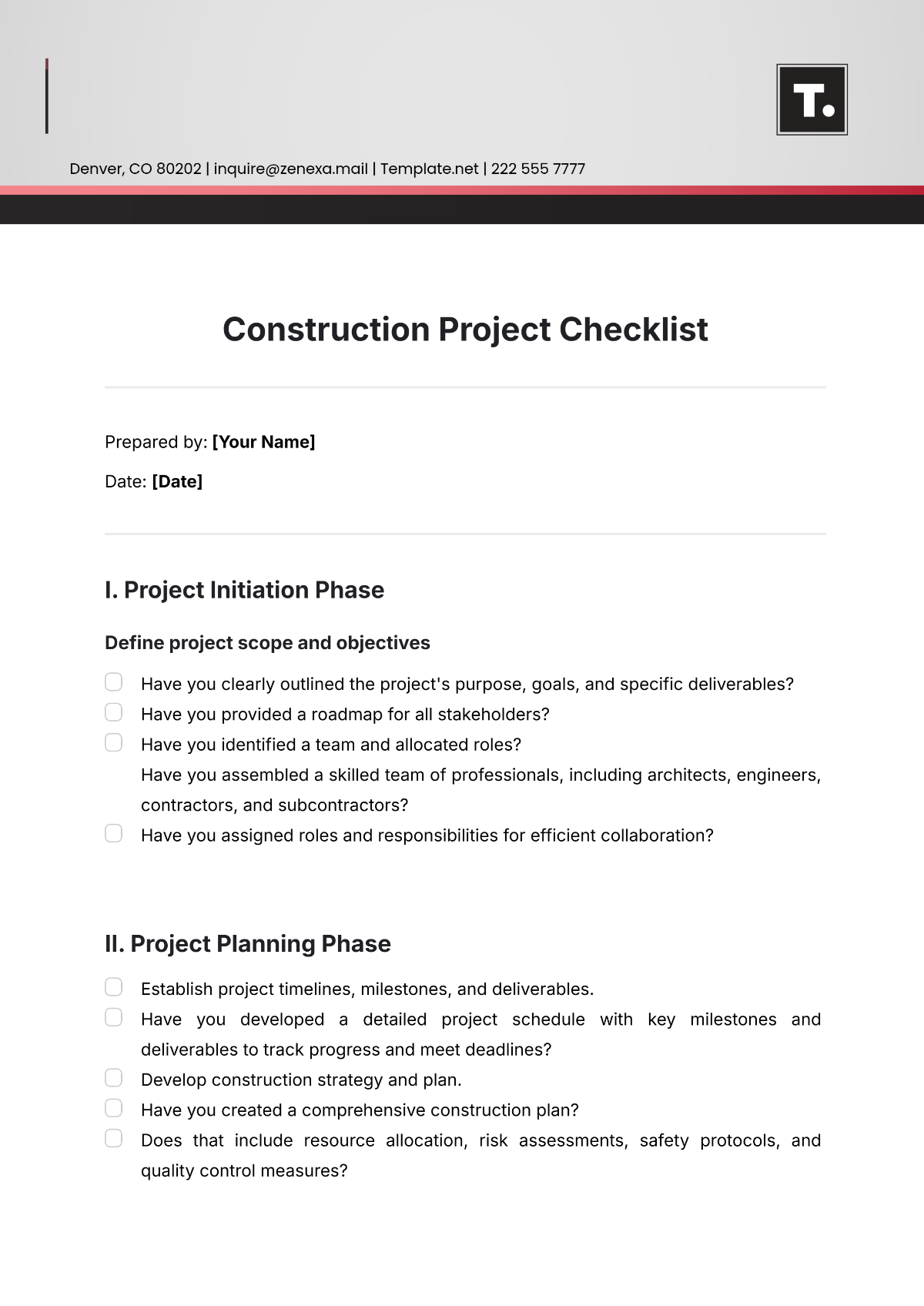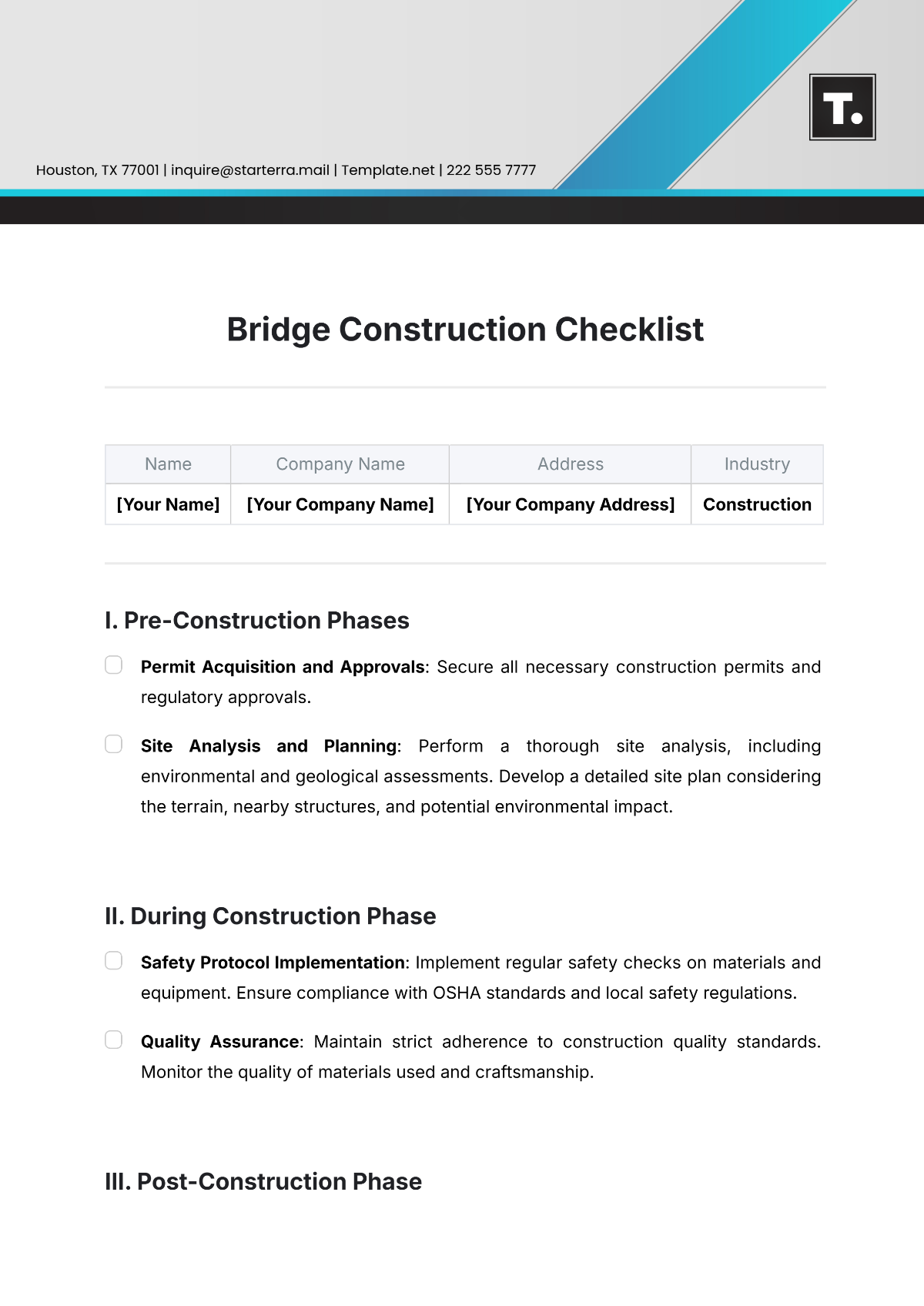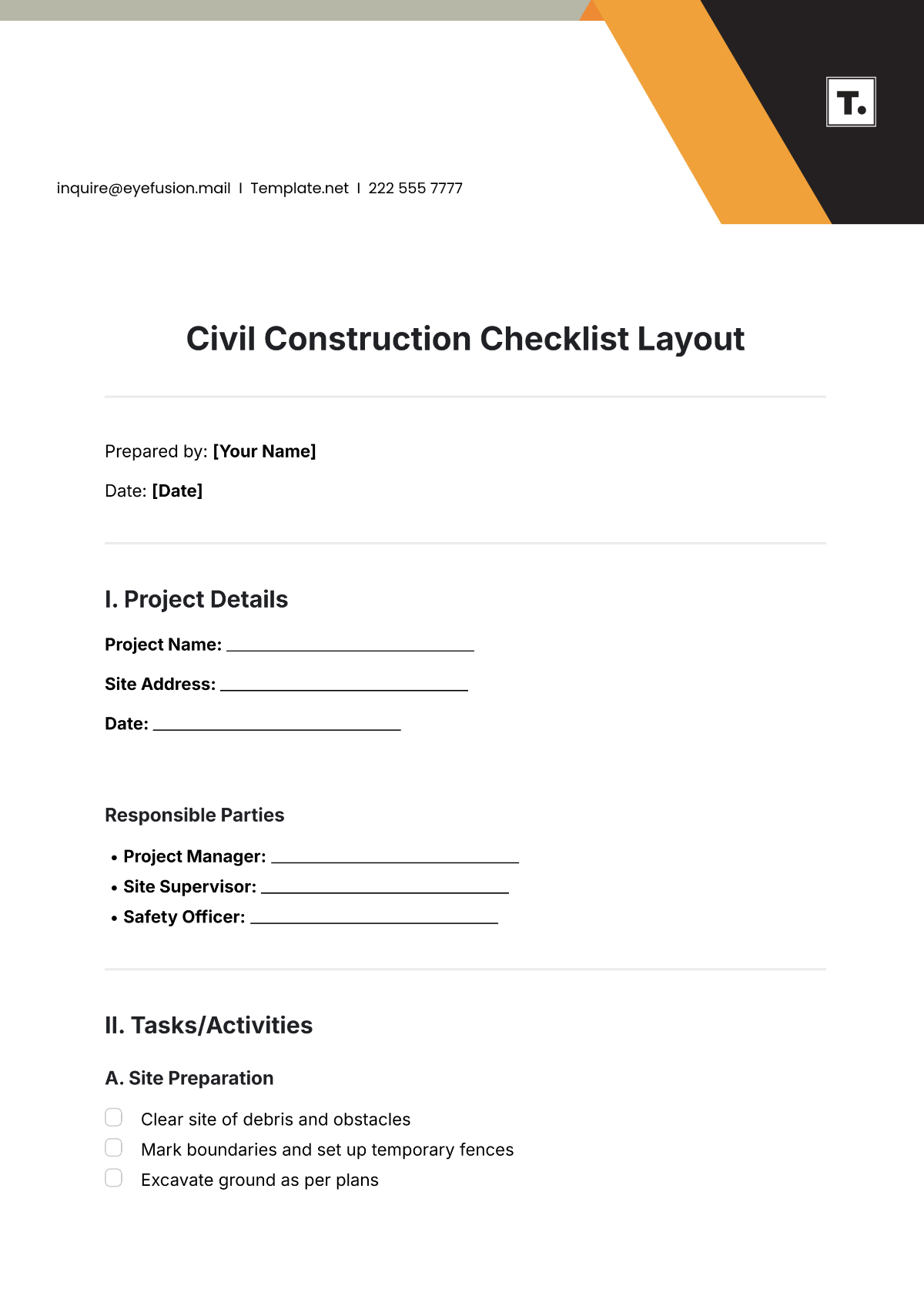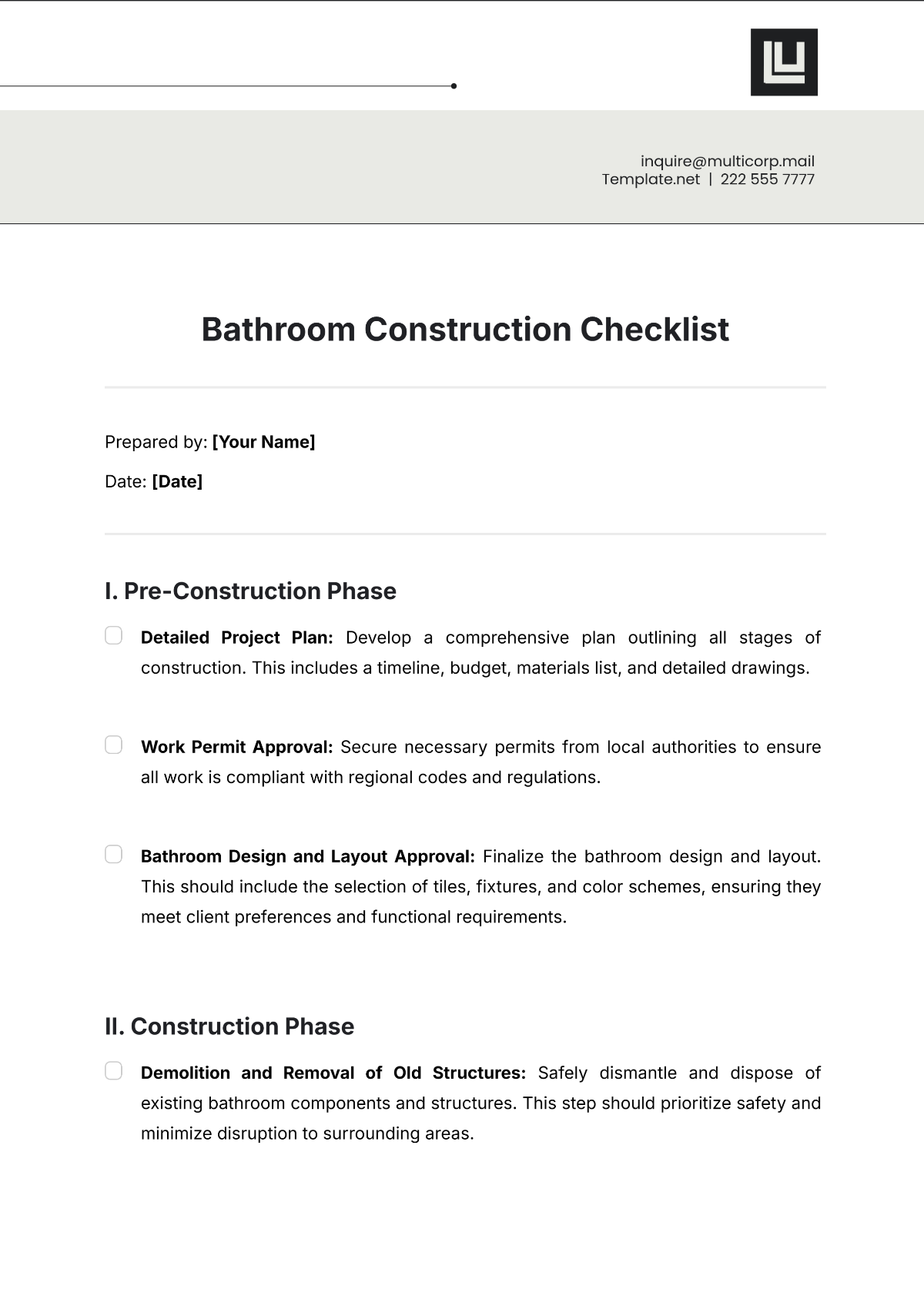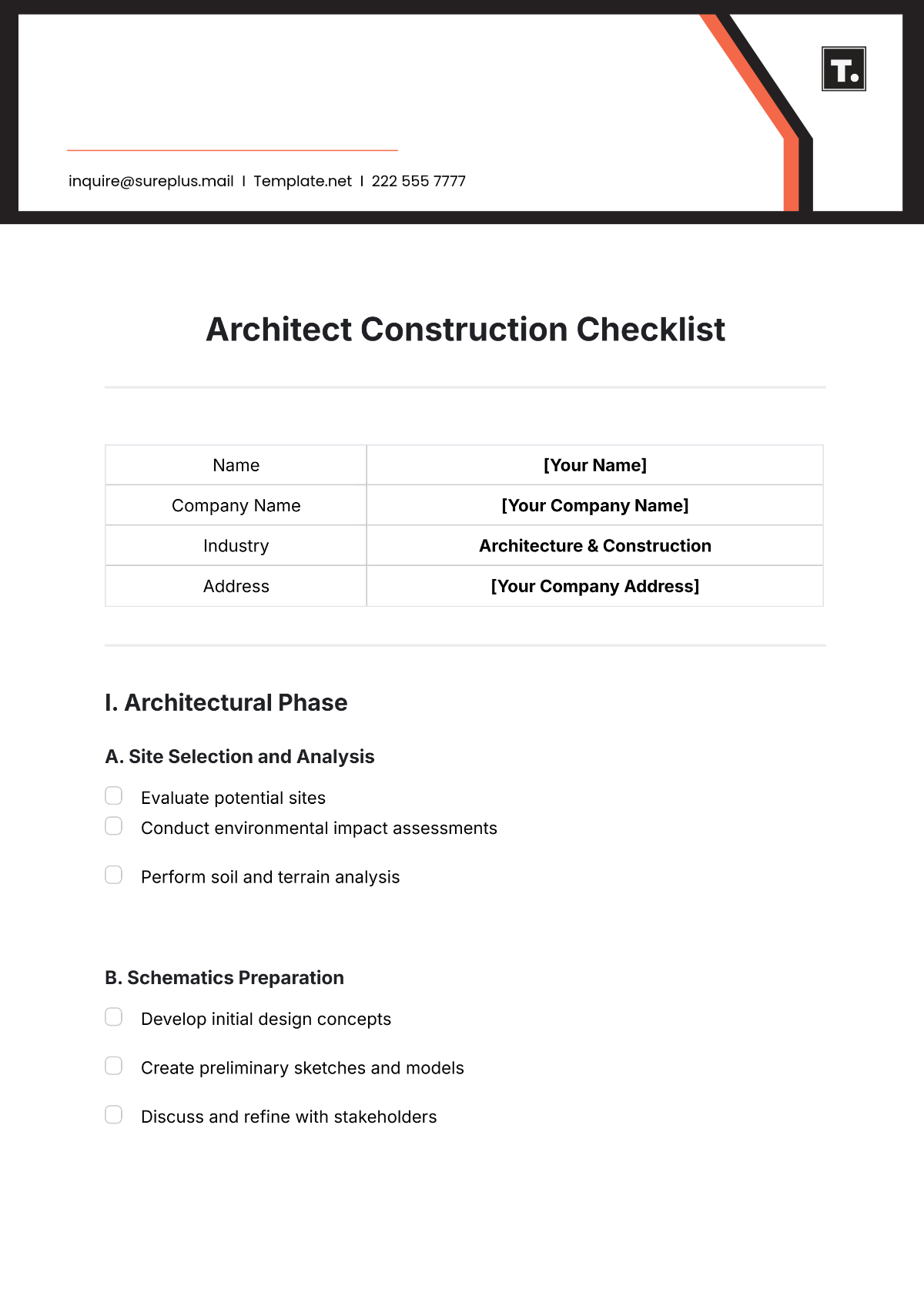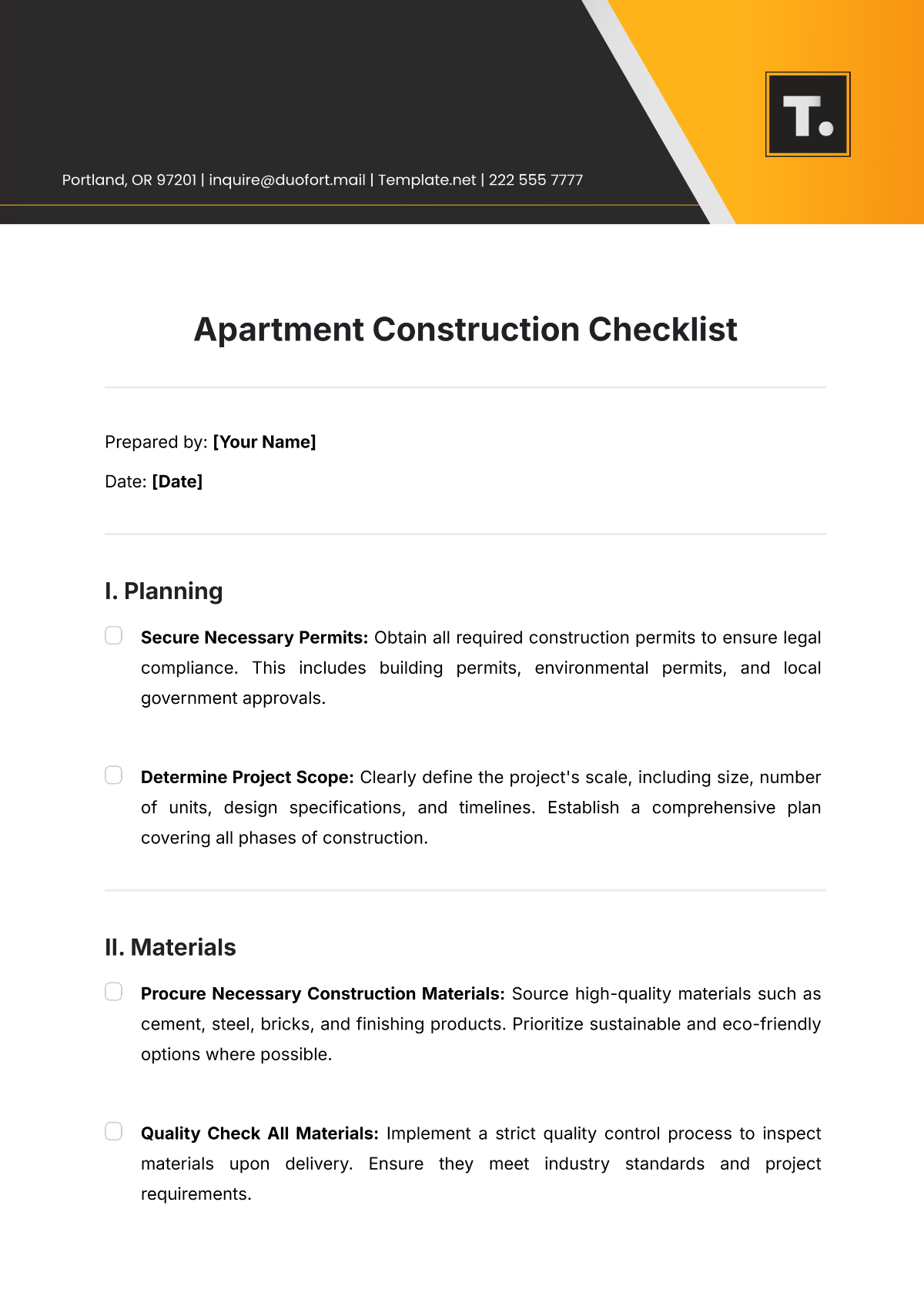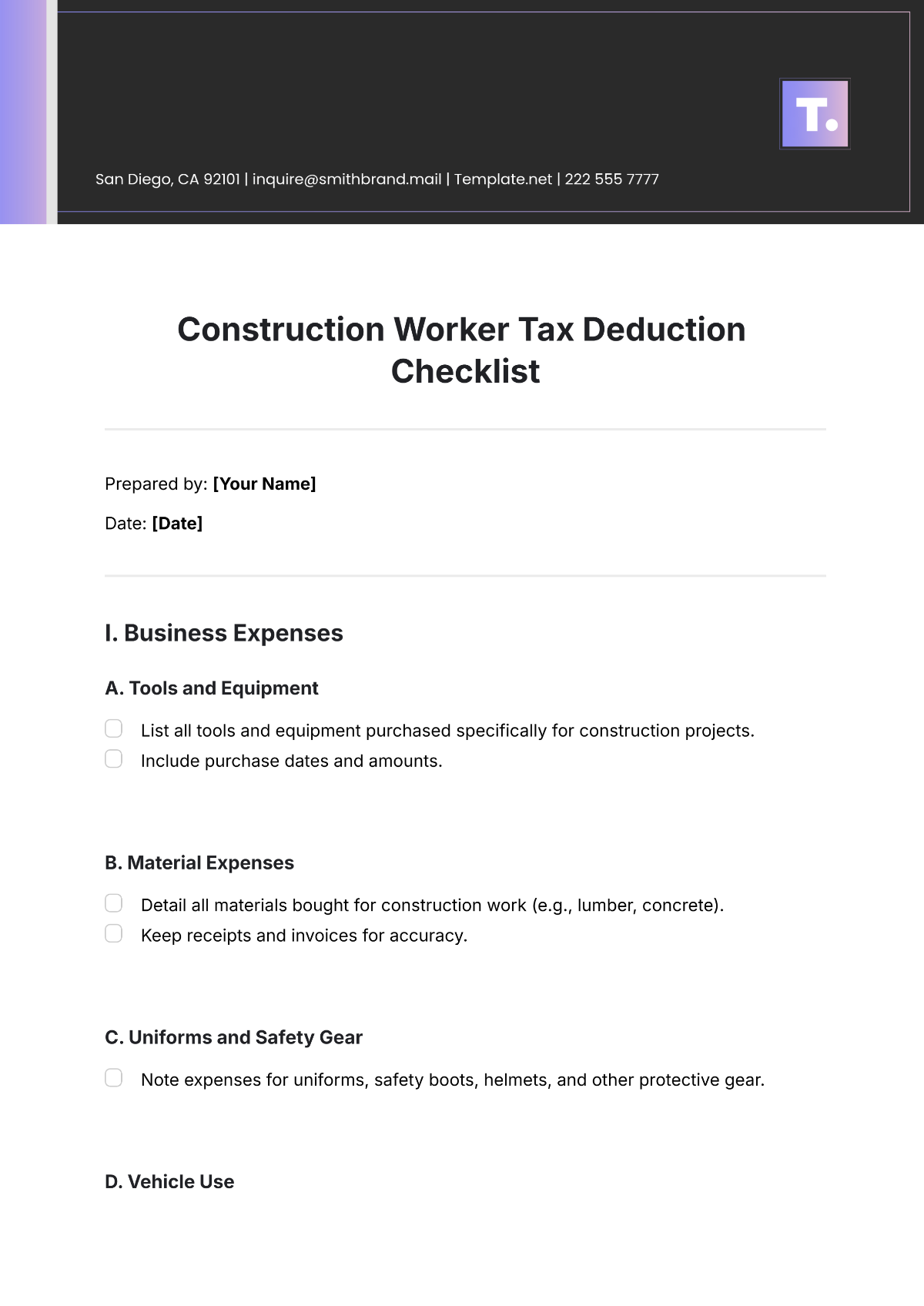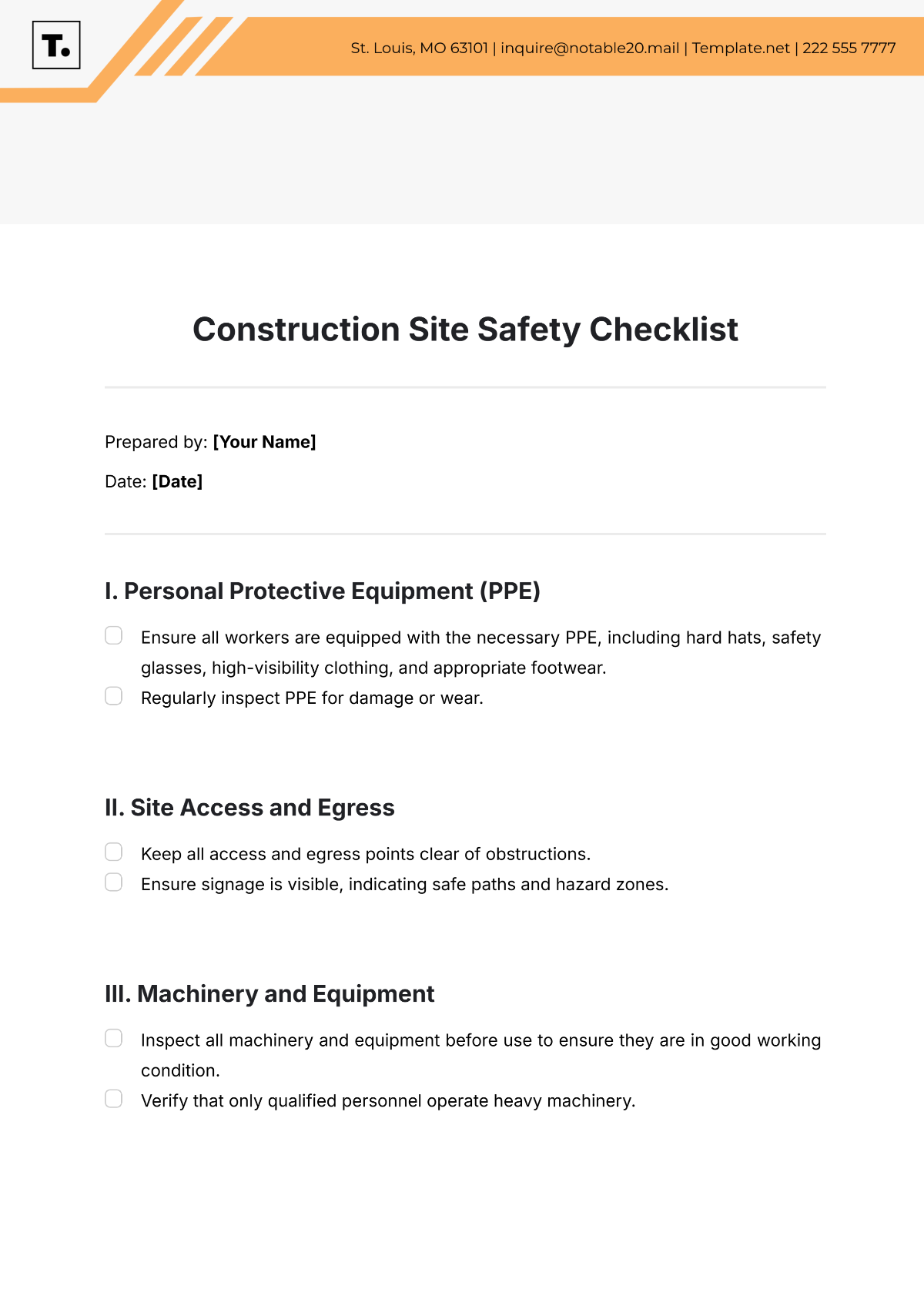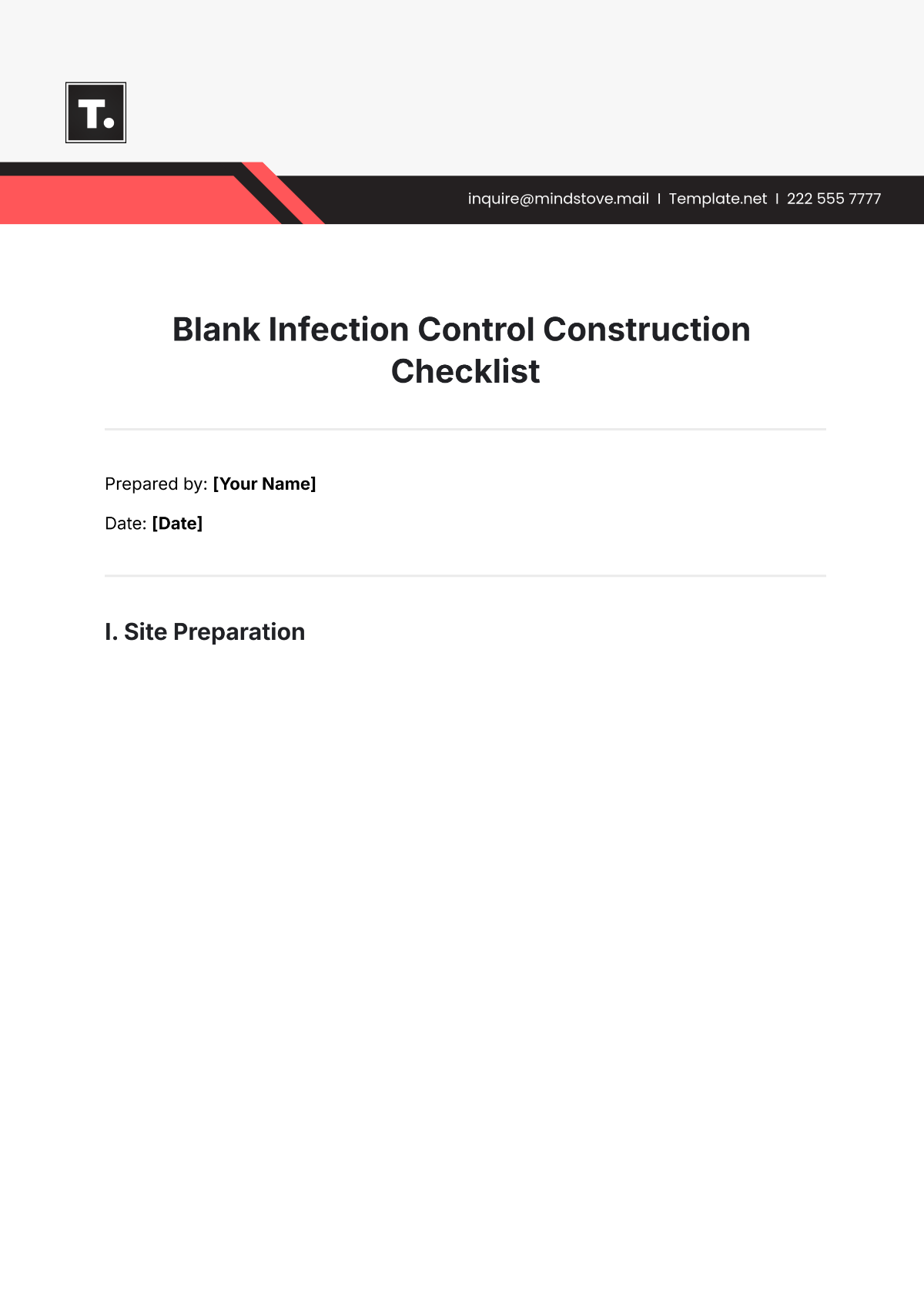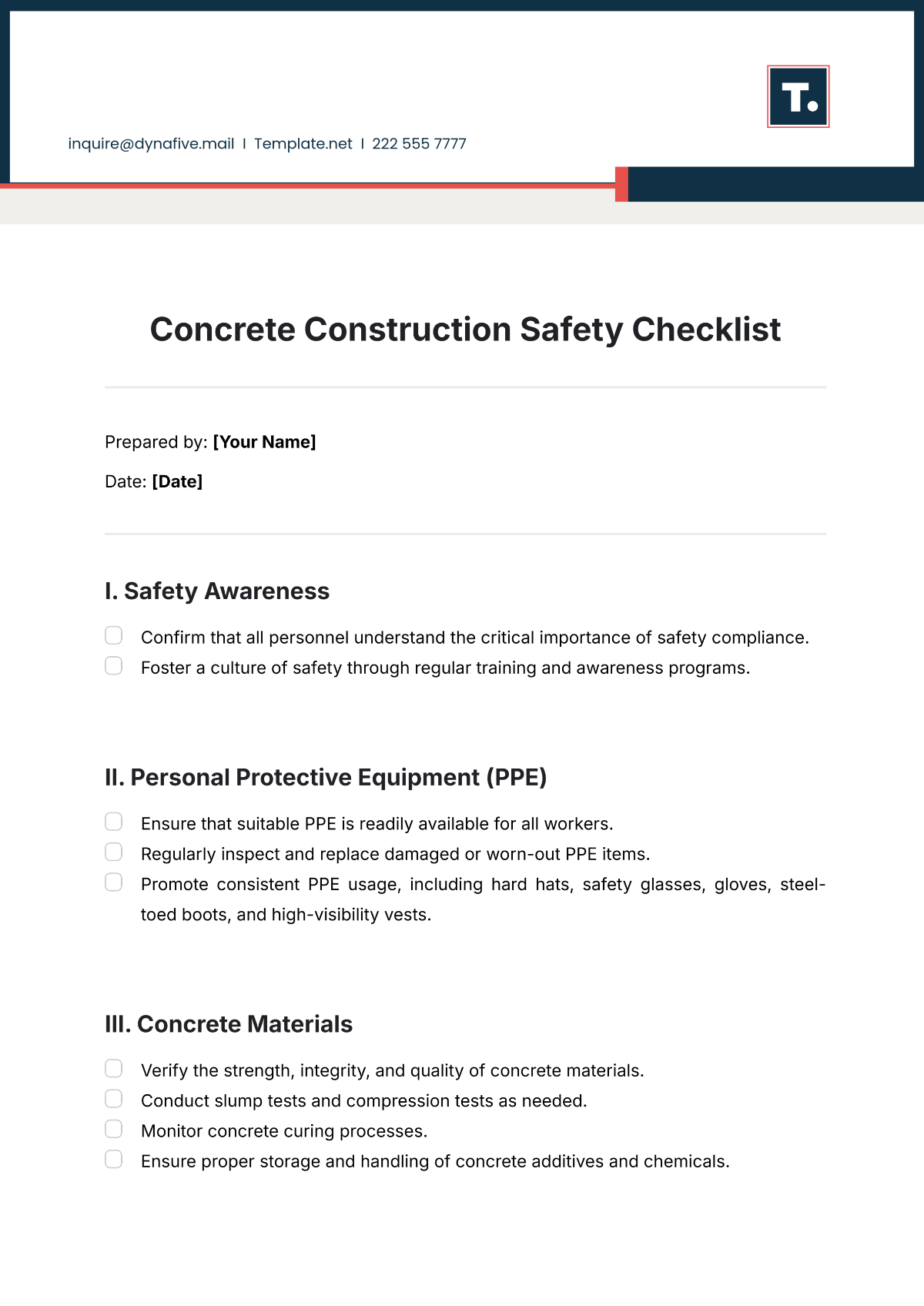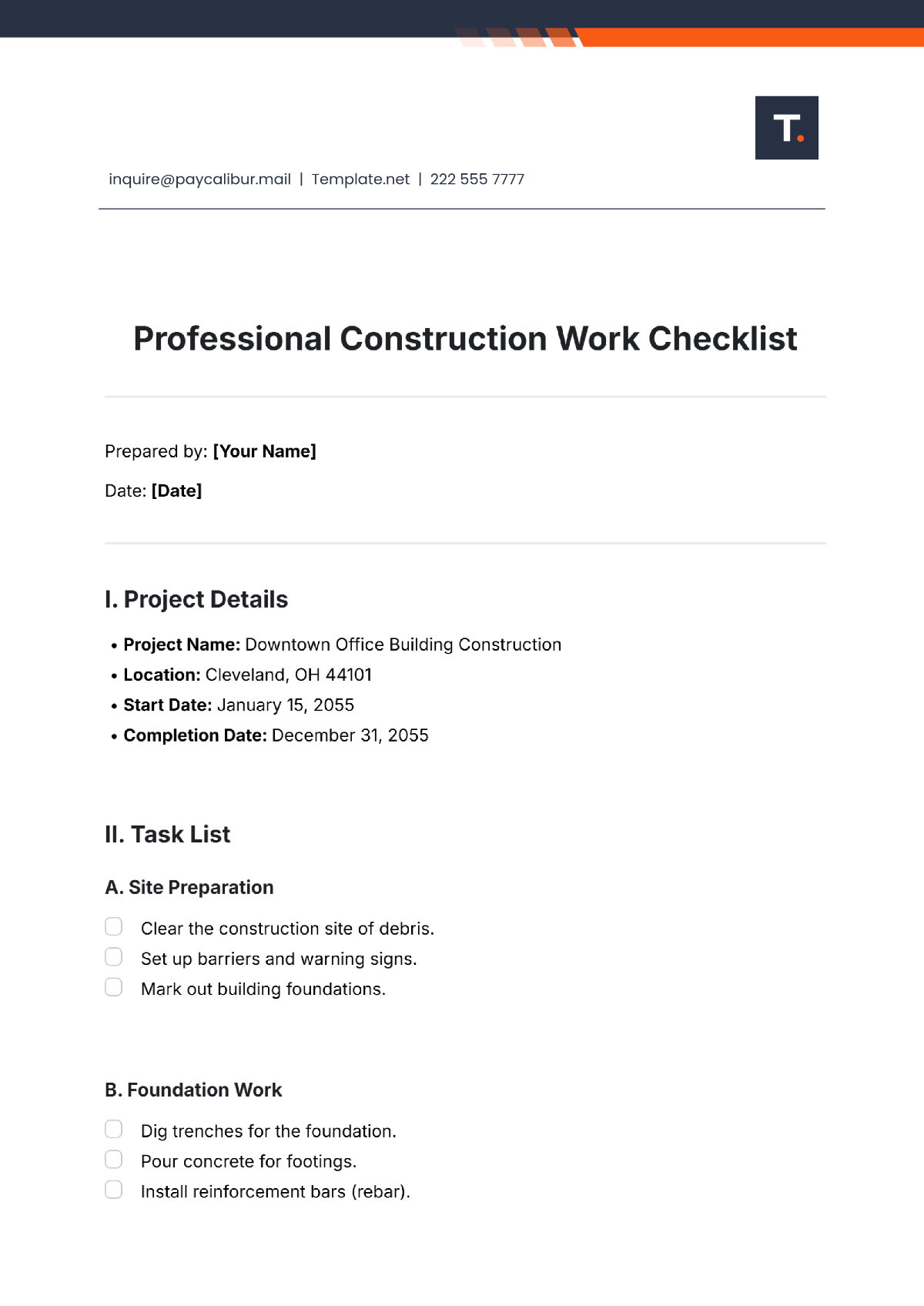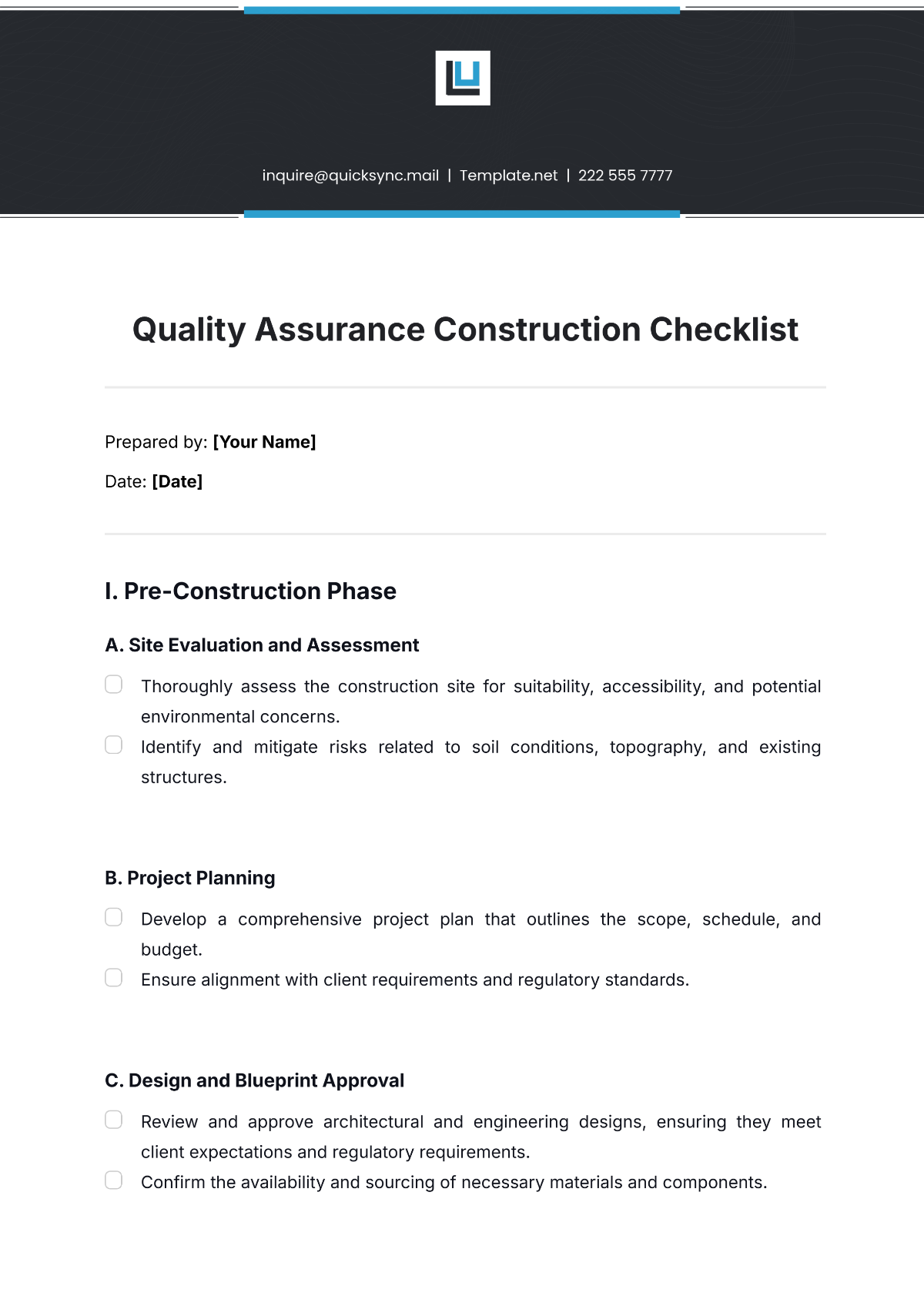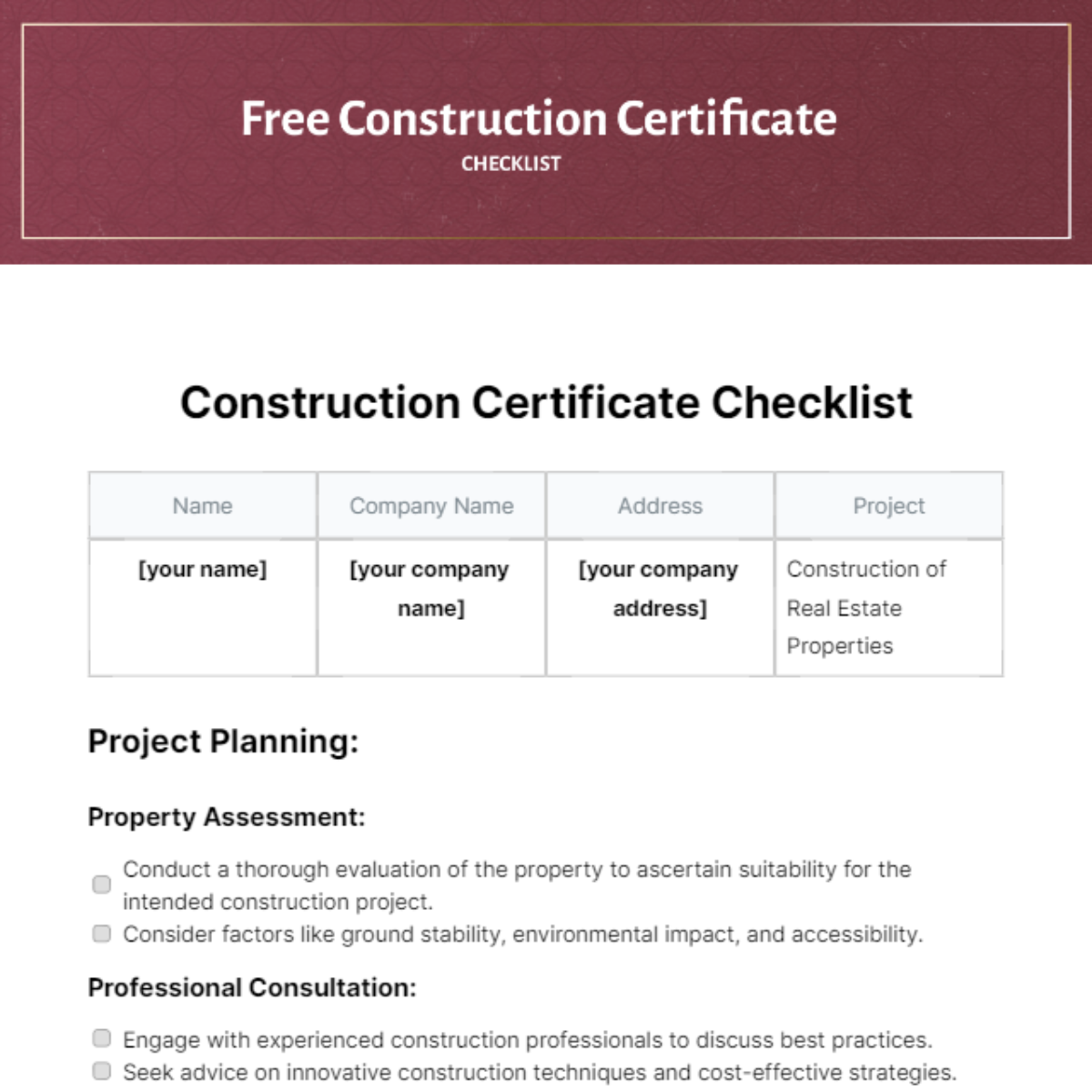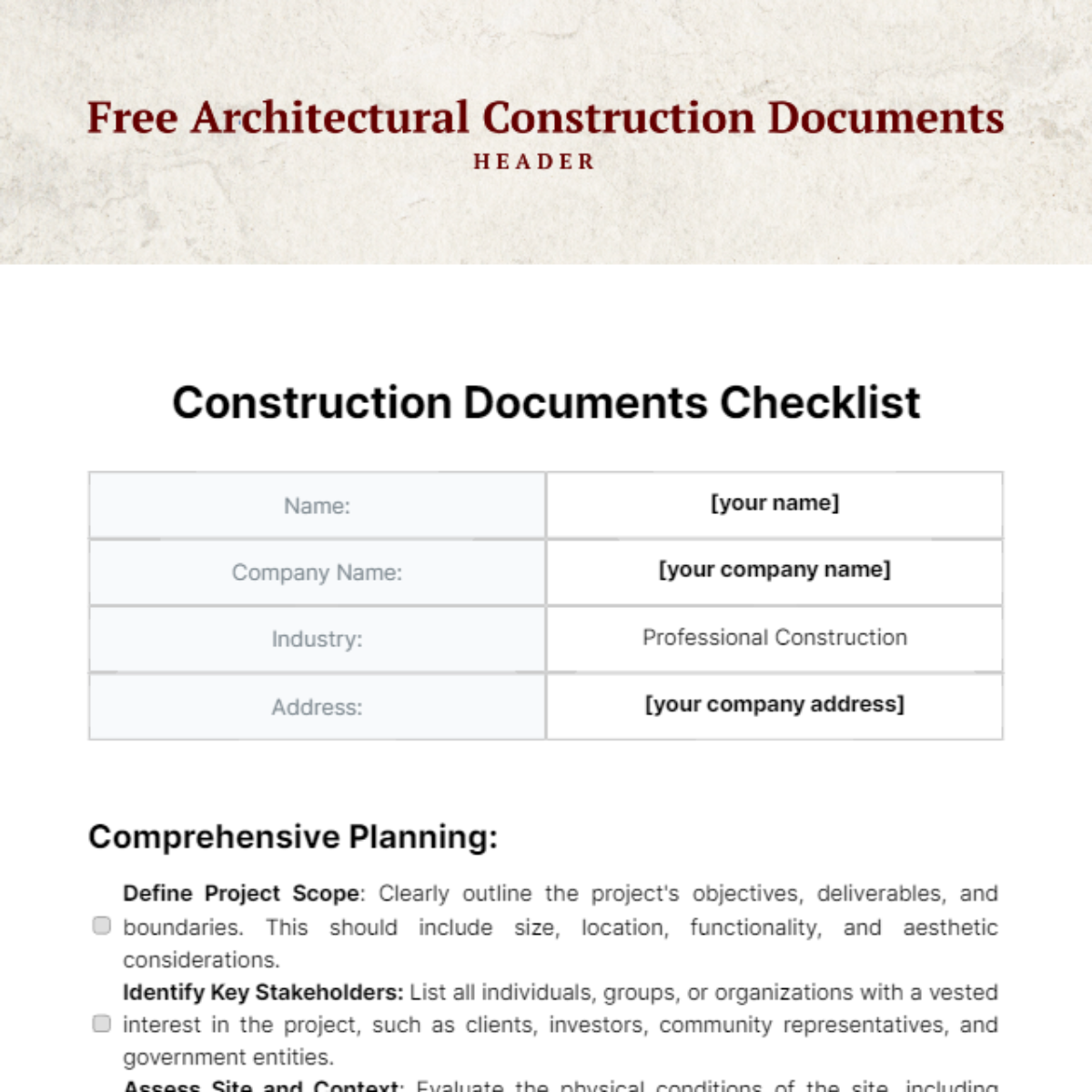Free Pre-Construction Site Setup Checklist Template
Pre-Construction Site Setup Checklist
Prepared by: [YOUR NAME]
Date: [DATE]
Company: [YOUR COMPANY NAME]
Setting up a construction site is a critical phase in any project, laying the groundwork for safety, efficiency, and compliance. The pre-construction site setup checklist serves as a comprehensive guide to ensure that all necessary preparations are completed before work begins. This checklist covers essential tasks such as obtaining permits, establishing site security, and implementing health and safety protocols. By following this checklist, project managers can minimize risks, streamline operations, and create a conducive environment for successful construction activities.
1. Permits and Documentation
Ensure all necessary permits are obtained (building, environmental, zoning).
Confirm approvals from local authorities.
Review and file all relevant legal and regulatory documents.
Conduct a site survey for accurate measurements and boundaries.
Check insurance coverage and verify the contractor’s insurance.
2. Site Access and Security
Plan site access routes for deliveries, workers, and emergency services.
Install perimeter fencing and secure access points.
Set up signage for site rules, safety regulations, and directions.
Install security cameras and lighting.
Arrange for security personnel if needed.
3. Temporary Utilities Setup
Arrange for a temporary power supply (generators or local utility connection).
Set up temporary water supply (standpipes or tanks).
Establish drainage and waste management facilities.
Install temporary lighting on-site.
Ensure internet/communication access for the site office.
4. Site Office and Welfare Facilities
Set up site office with desks, chairs, computers, and storage.
Install portable toilets and washing facilities.
Set up a canteen/rest area for workers.
Ensure the first aid station is equipped and operational.
Install fire extinguishers and emergency alarms.
5. Material and Equipment Storage
Designate storage areas for materials, ensuring they are protected from weather.
Set up tool and equipment storage with secure locking mechanisms.
Implement inventory control systems for materials and equipment.
Ensure proper handling and storage of hazardous materials.
6. Health and Safety Protocols
Conduct a risk assessment and develop a safety plan.
Ensure all workers have received necessary safety training.
Provide PPE (Personal Protective Equipment) to all workers (helmets, gloves, vests).
Install safety signage and barriers around hazardous areas.
Ensure emergency procedures and exits are marked.
7. Environmental Controls
Set up erosion and sediment control measures (e.g., silt fencing, drainage).
Implement dust suppression methods (water spraying or tarps).
Set up noise control measures if working in residential areas.
Ensure proper disposal and recycling of construction waste.
Prepare spill kits for handling hazardous material spills.
8. Site Layout and Markings
Mark out construction zones and laydown areas.
Identify and mark underground utilities (electricity, gas, water lines).
Install clear signage for traffic management and pedestrian routes.
Mark areas for heavy machinery and vehicle access.
Map out emergency exits and muster points.
9. Machinery and Equipment Checks
Inspect all heavy machinery for safety compliance and functionality.
Arrange for maintenance or servicing of equipment as necessary.
Ensure proper certification and licenses for machine operators.
Check lifting equipment (cranes, forklifts) for safety compliance.
Calibrate measuring equipment (levels, lasers, GPS) for accuracy.
10. Communication and Coordination
Establish communication protocols between the site office, workers, and contractors.
Ensure walkie-talkies or communication systems are operational.
Plan for regular site meetings and updates on progress.
Share emergency contact information with all workers.
Post a site noticeboard with daily updates and important information.
